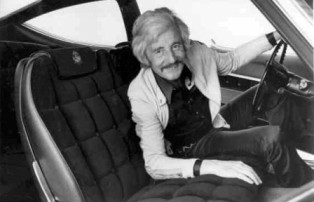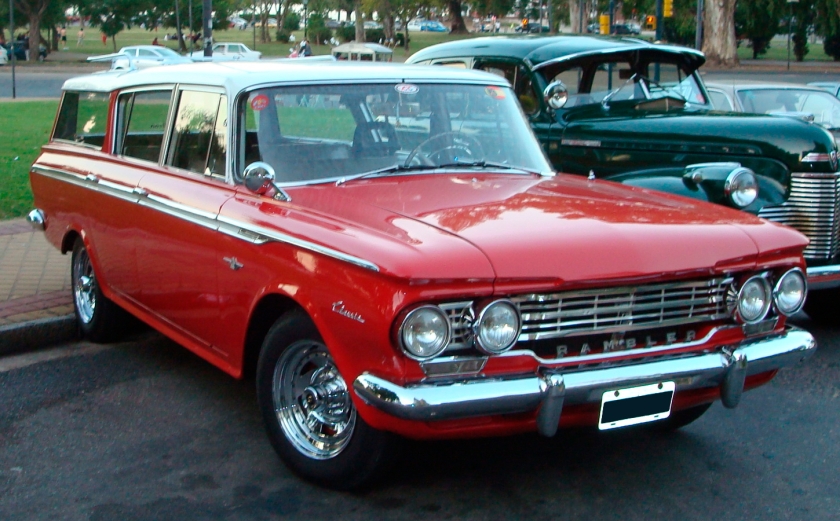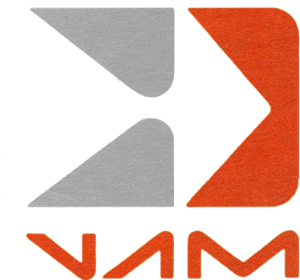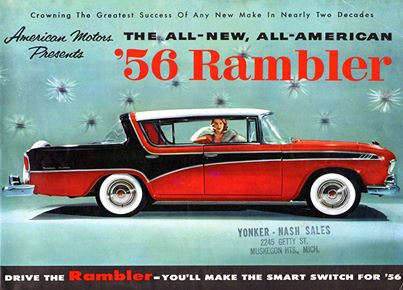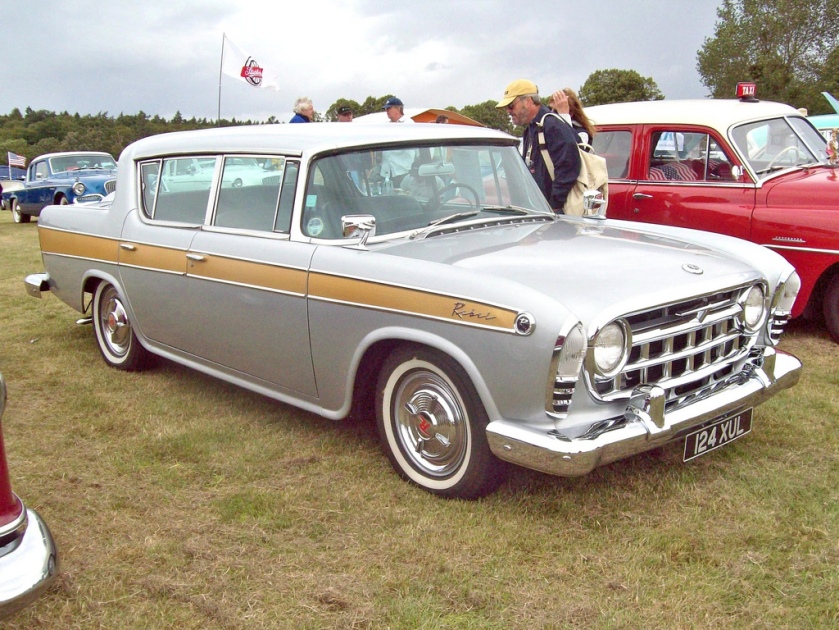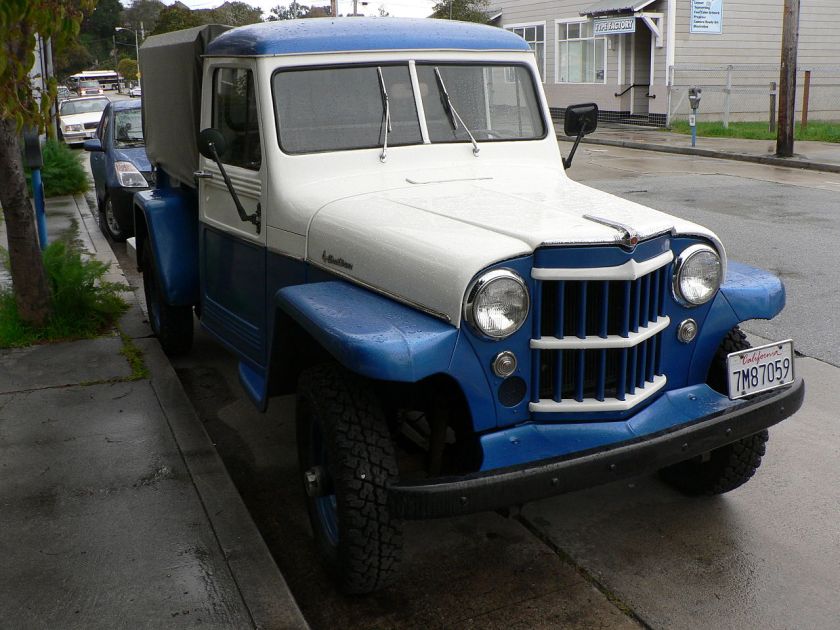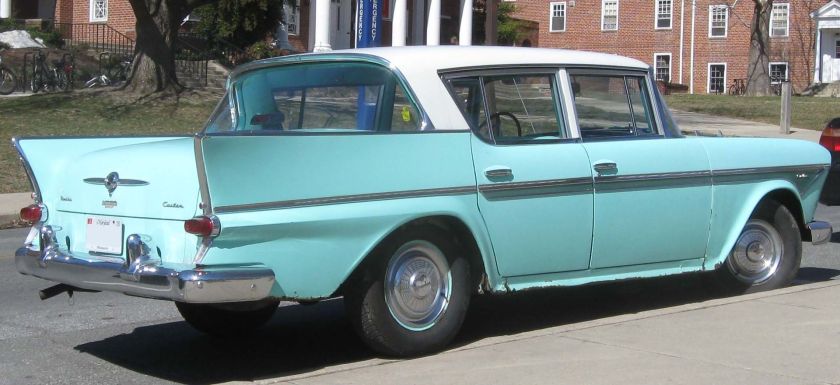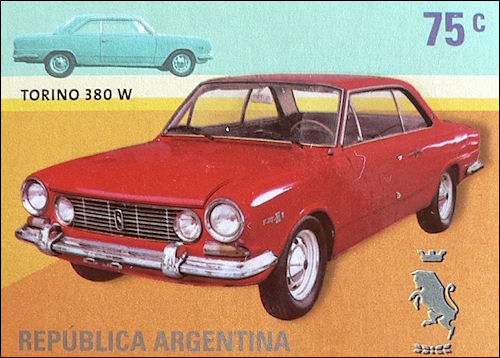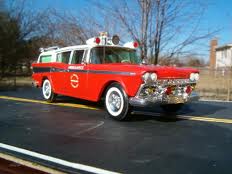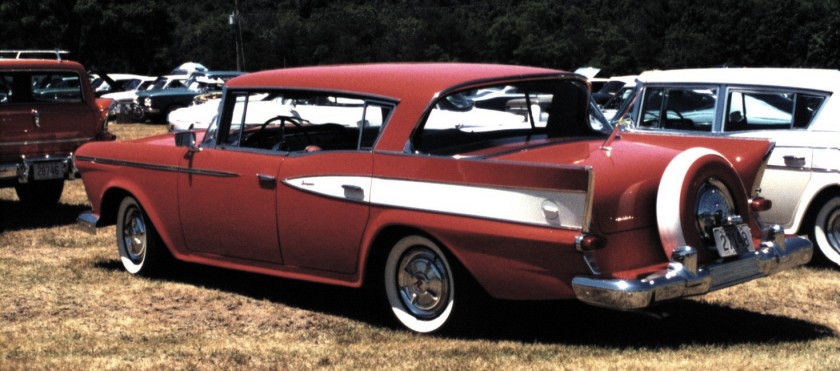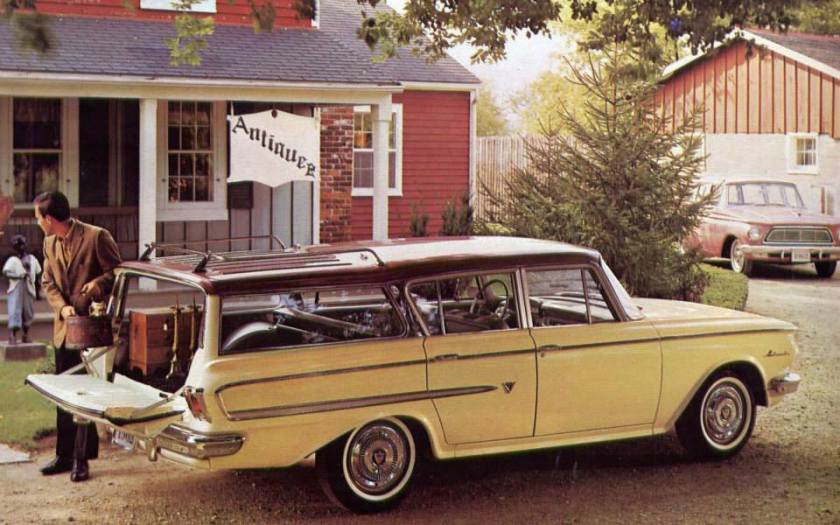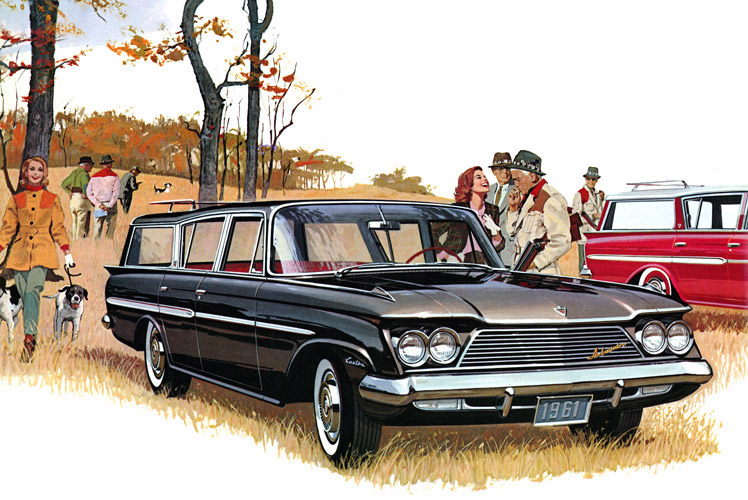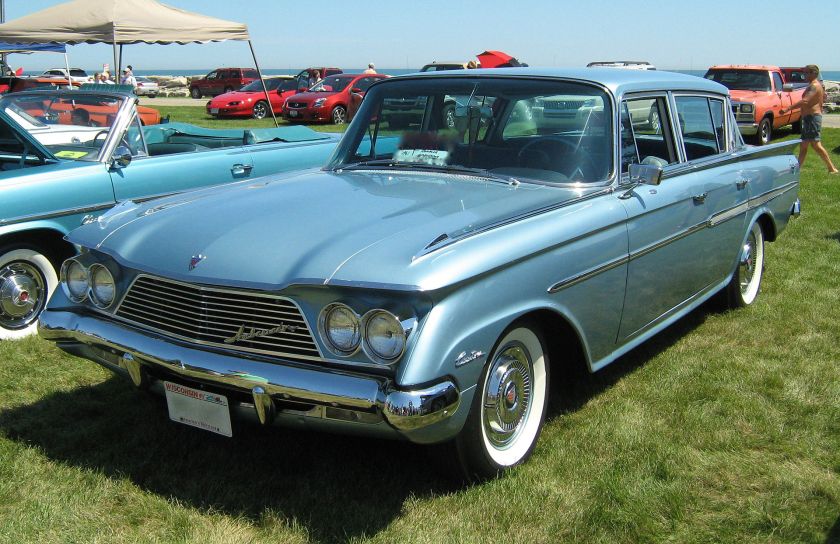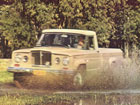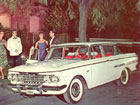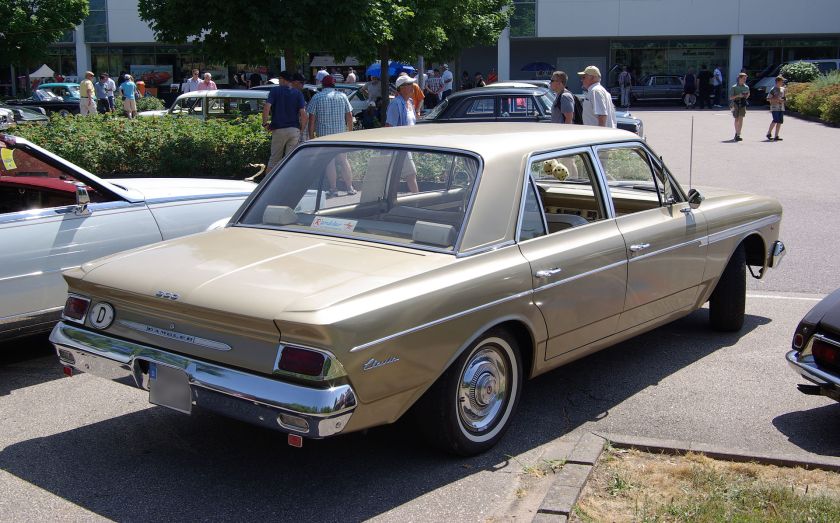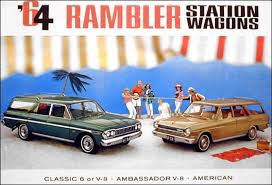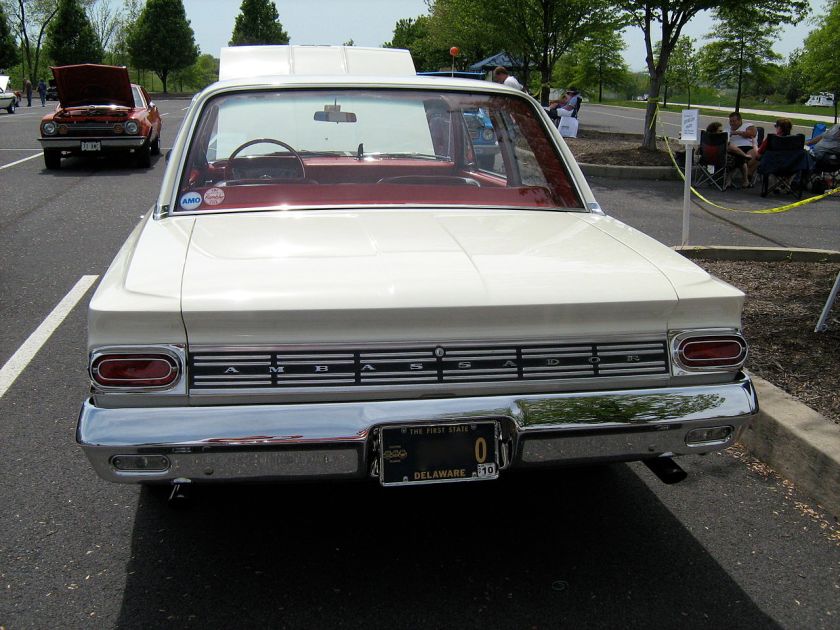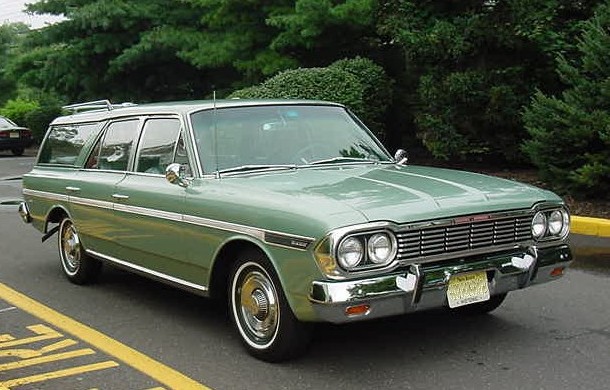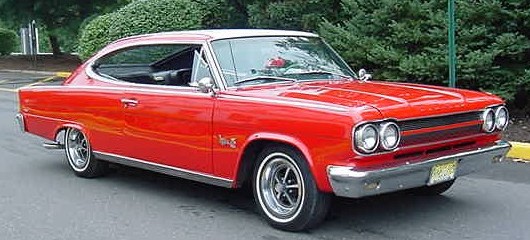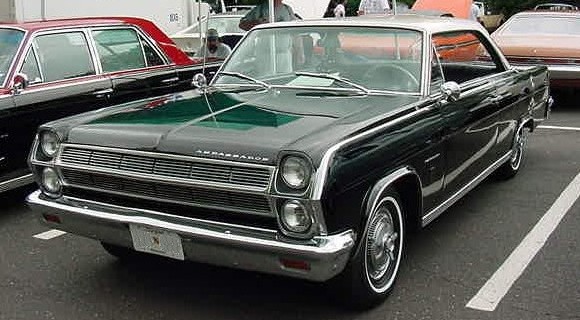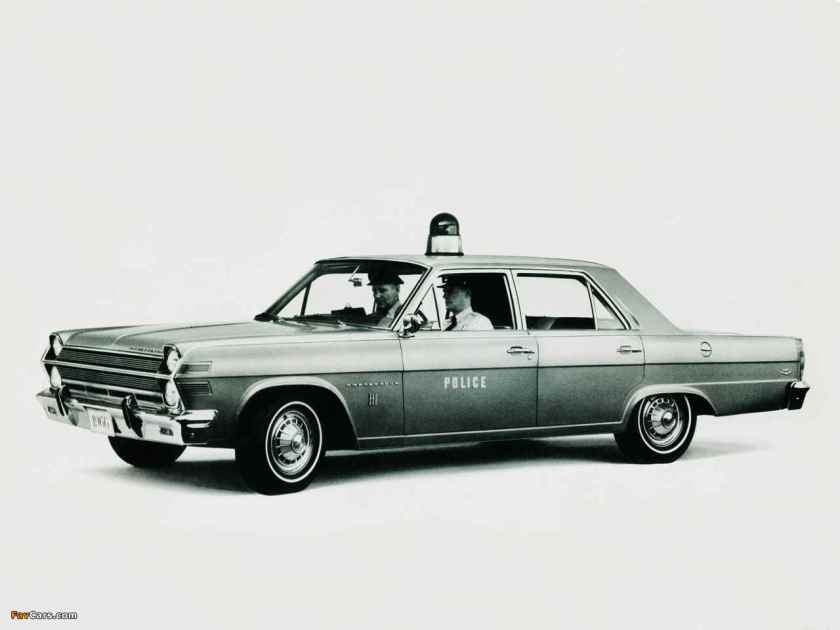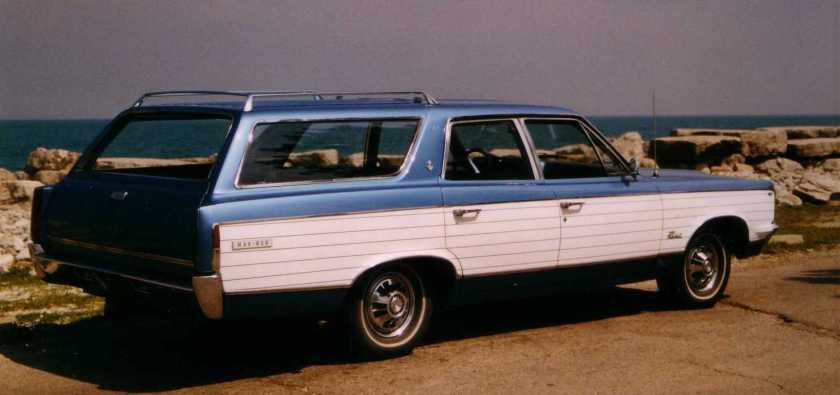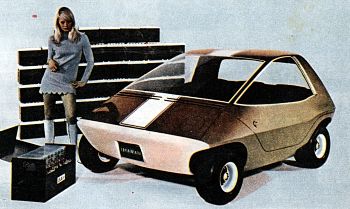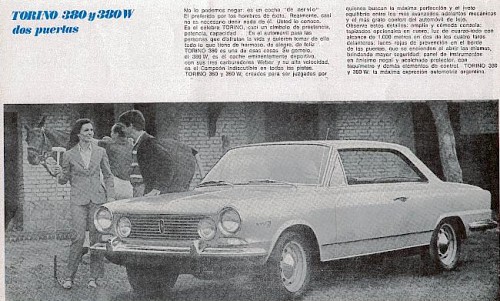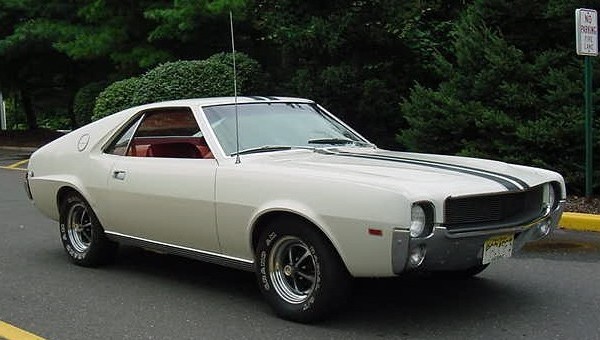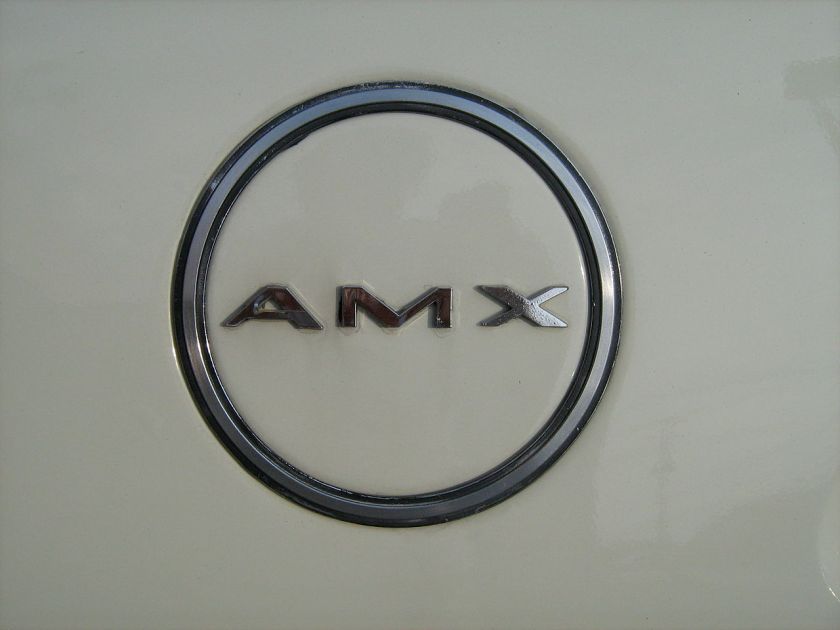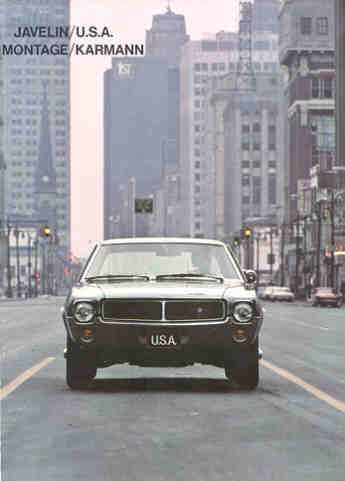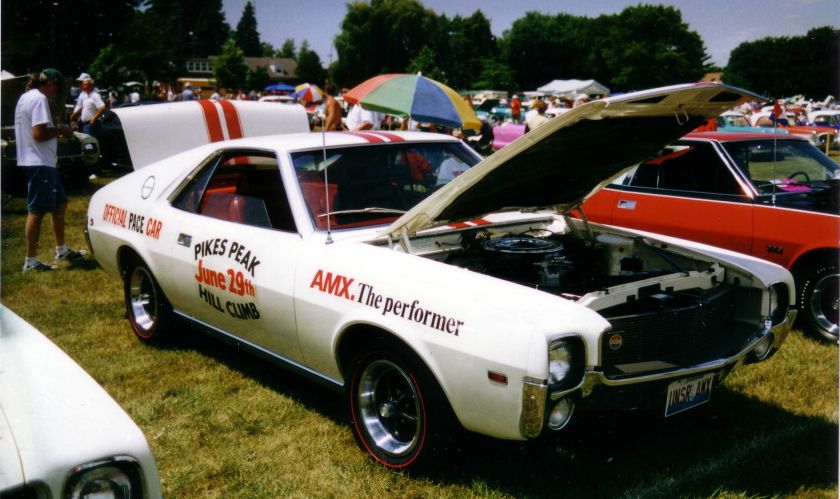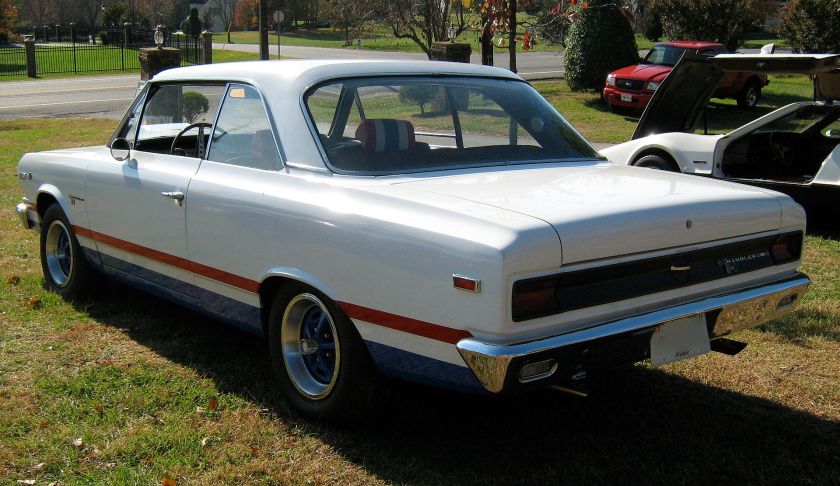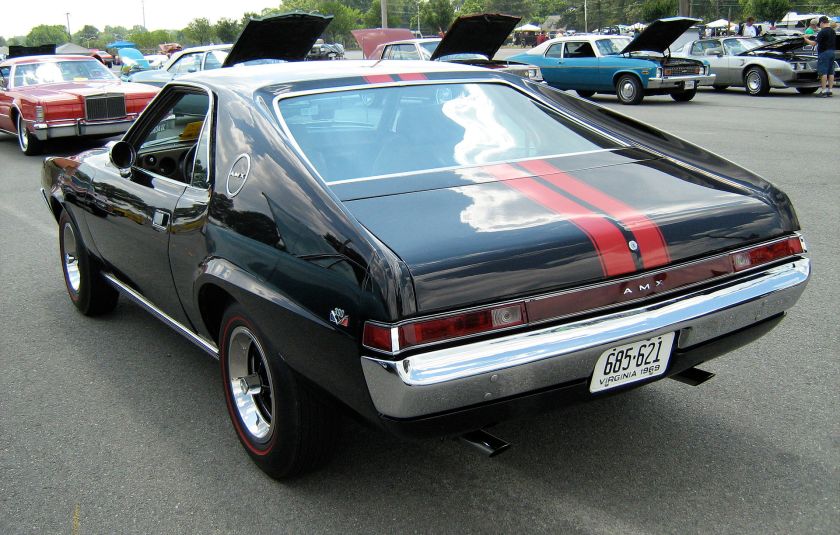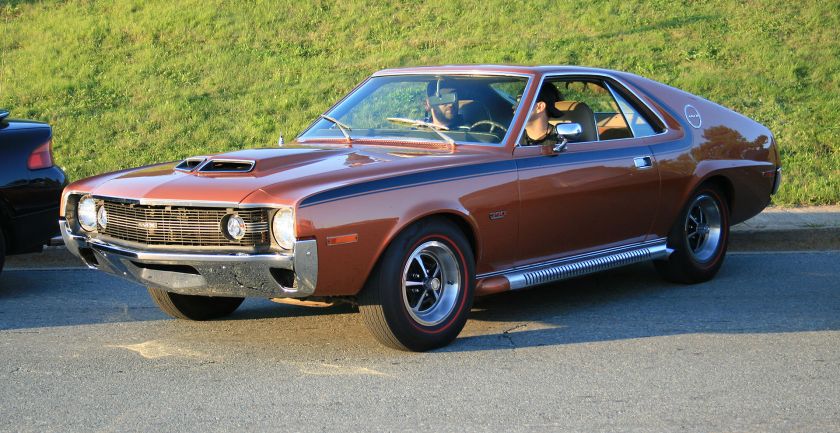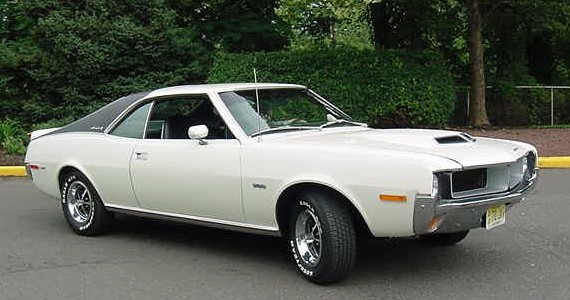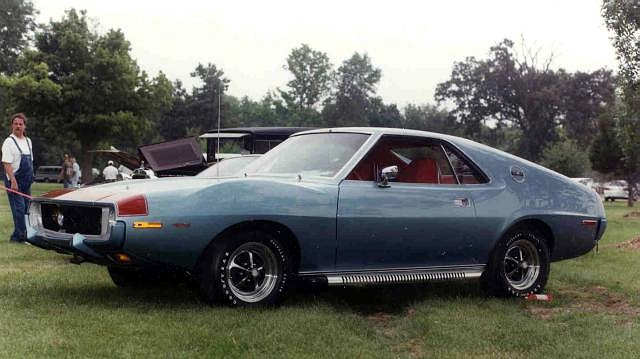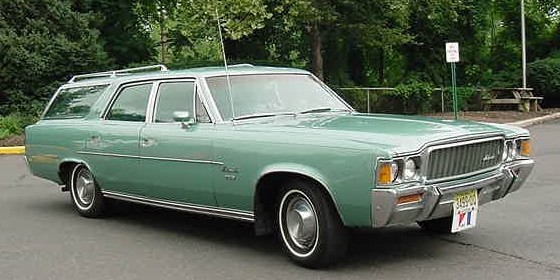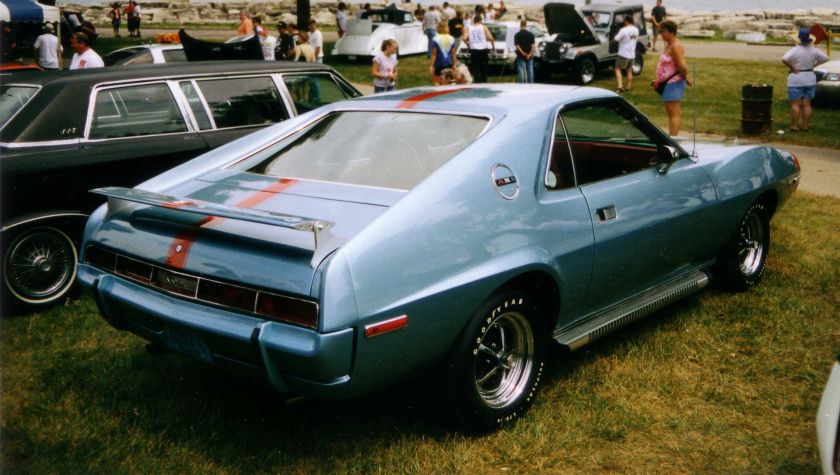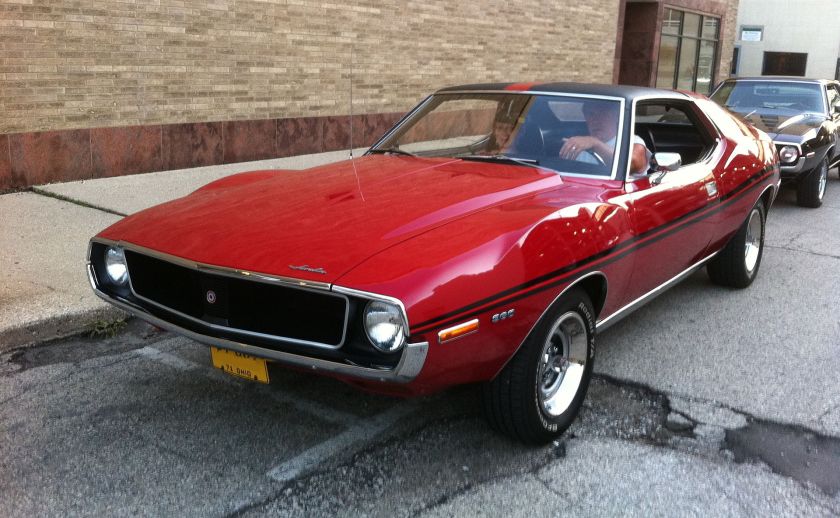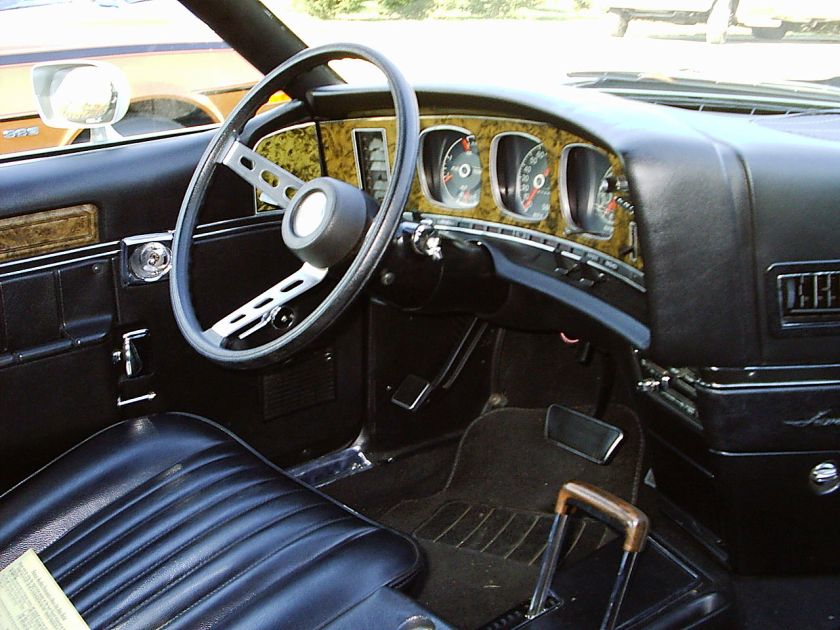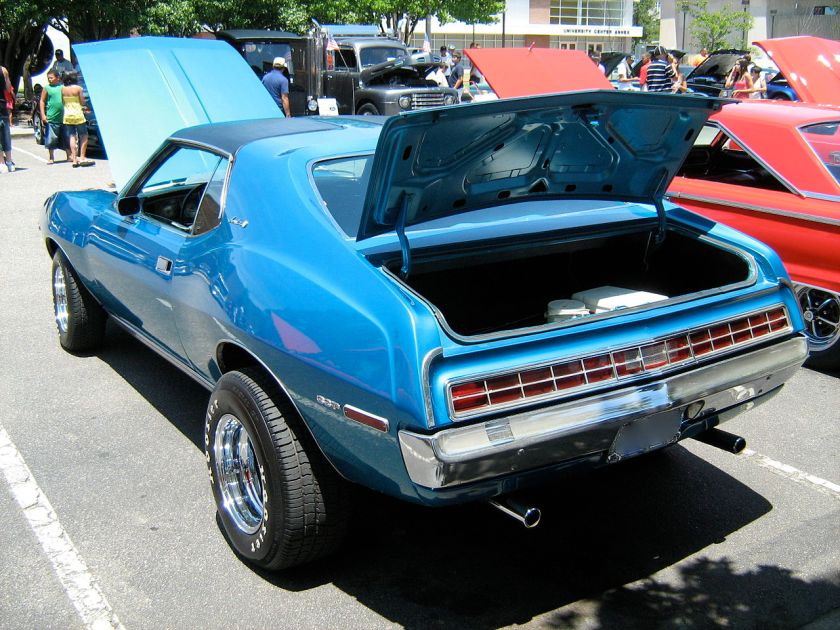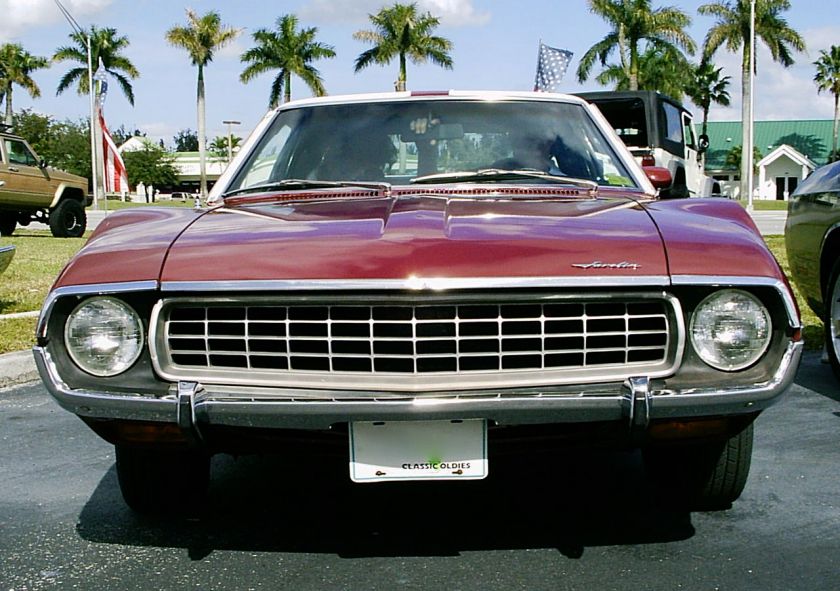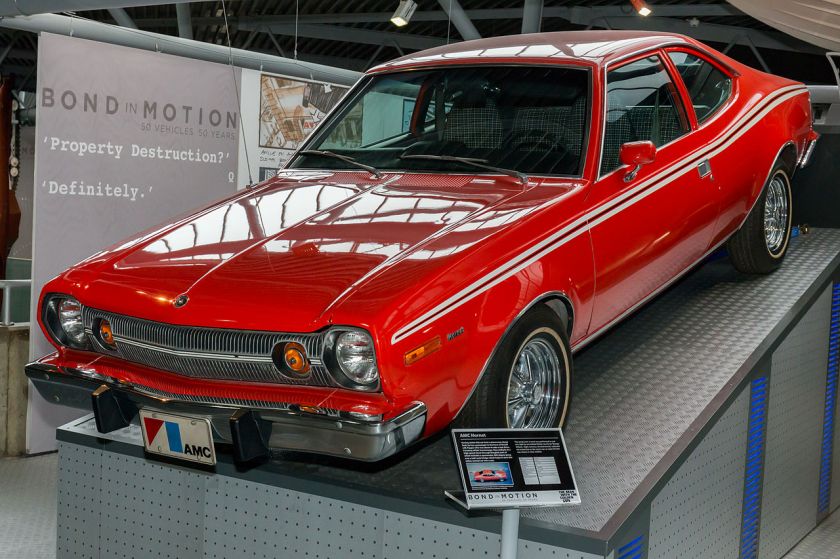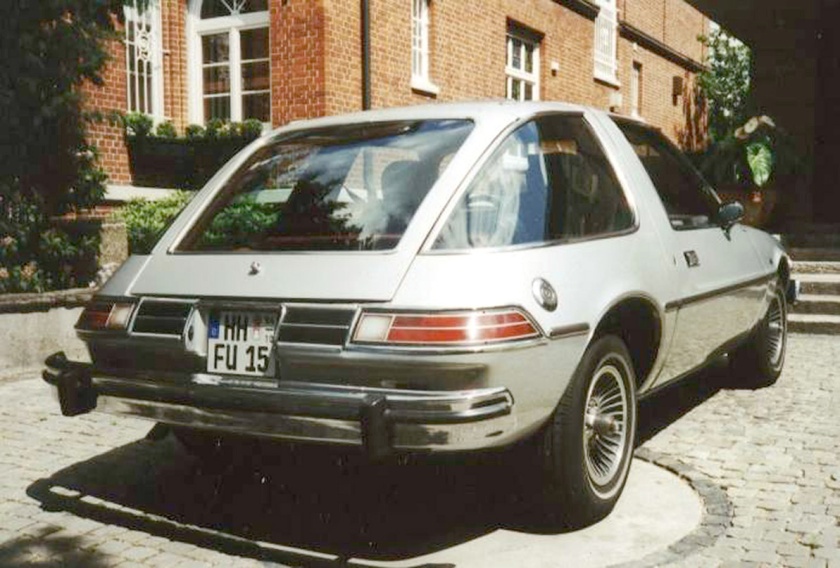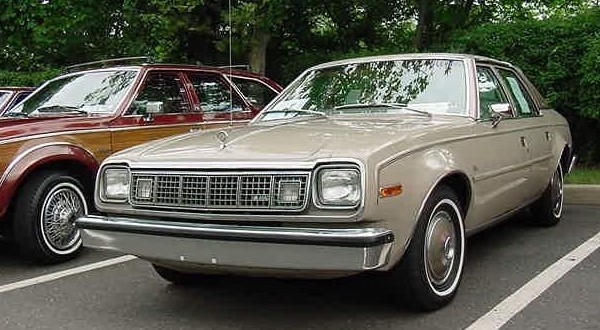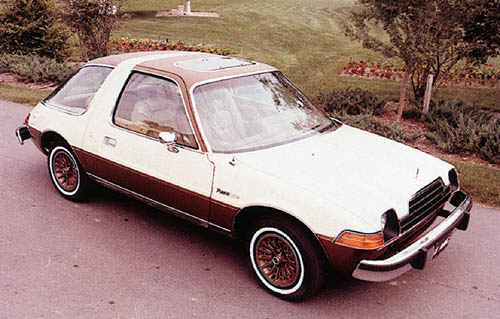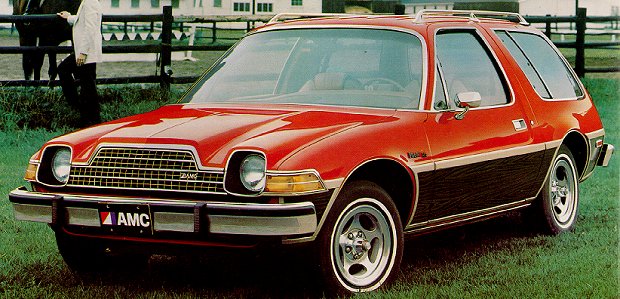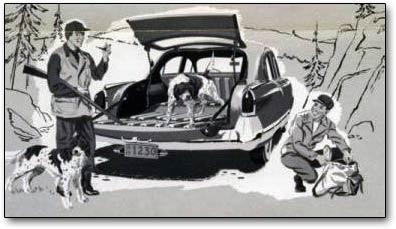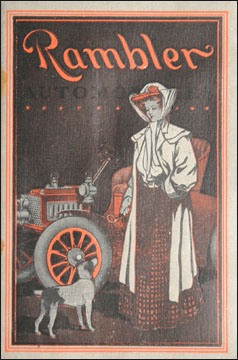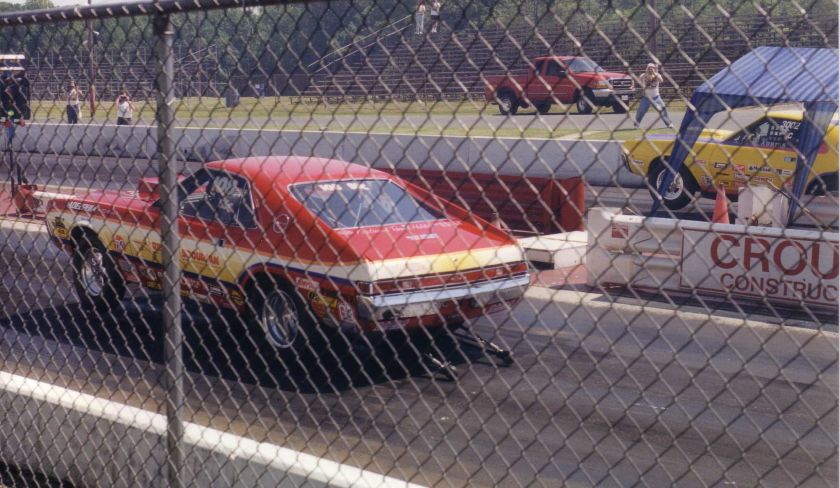RAMBLER automobile Kenosha Wisconsin USA Part IV
RAMBLER automobile
Kenosha Wisconsin USA Part II
for part one:
http://myntransportblog.com/2015/03/20/rambler-automobile-kenosha-wisconsin-usa-part-i/
http://myntransportblog.com/2015/03/21/rambler-automobile-kenosha-wisconsin-usa-part-ii/
http://myntransportblog.com/2015/03/23/rambler-automobile-kenosha-wisconsin-usa-part-iii/
for nash:
for hudson:
for amc:
http://en.wikipedia.org/wiki/American_Motors
AMC Javelin
| AMC Javelin | |
|---|---|

1971 AMC Javelin SST
|
|
| Overview | |
| Manufacturer | American Motors Corporation(AMC) |
| Also called | Rambler Javelin (Australia) Javelin 79-K (Europe) VAM Javelin (Mexico) |
| Production | 1967 – 1974 |
| Assembly | Kenosha, Wisconsin, United States Port Melbourne, Australia Osnabrück, Germany (Karmann) Mexico City, Mexico Caracas, Venezuela |
| Designer | Richard A. Teague |
| Body and chassis | |
| Class | Pony car Muscle car |
| Body style | 2-door hardtop |
| Layout | FR layout |
| Platform | AMC’s “junior” cars |
The AMC Javelin is a front-engine, rear wheel drive, two-door hardtop manufactured and marketed by AMC in two generations, 1968-1970 and 1971-1974. Styled by Dick Teague, the Javelin was available in a range of trim and engine levels, from economical pony car to muscle car variants. In addition manufacture in Kenosha, Wisconsin, Javelins were assembled under license in Germany, Mexico, Venezuela, as well as Australia —and were marketed globally.
As the winner of Trans-Am race series in 1971, 1972, and 1976, the second-generation AMX variant was the first pony car to be used as a normal highway patrol police car by a U.S. organization.
Development
American Motors’ Javelin served as the company’s entrant into the “pony car” market created by the Ford Mustang. The design evolved from two AMX prototypes shown in AMC’s “Project IV” concept cars during 1966. One was a fiberglass two-seat “AMX”, and the other was a four-seat “AMX II”. Both of these offerings reflected the company’s strategy to shed its “economy car” image and appeal to a more youthful, performance-oriented market.
Sales of convertibles were dropping and AMC did not have the resources to design separate fastback and notchback hardtops that were available on the Mustang and on the second-generation Plymouth Barracuda, so the AMC designer team under Richard A. Teague penned only one body style, “a smooth semi-fastback roofline that helped set Javelin apart from other pony cars.”
The Javelin was built on AMC’s “junior” (compact) Rambler American platform only as a two-door hardtop model to be a “hip”, dashing, affordable pony car, as well as available in muscle car performance versions. “Despite management’s insistence on things like good trunk space and rear- seat room, Teague managed to endow the Javelin with what he termed the wet T-shirt look: voluptuous curves with nary a hint of fat.”
First generation
| 1968 and 1969 | |
|---|---|

1968 AMC Javelin base model
|
|
| Overview | |
| Also called | IKA Mica (Argentina) Rambler Javelin (Australia) VAM Javelin (Mexico) |
| Production | August 1967 – July 1969 |
| Designer | Richard A. Teague |
| Body and chassis | |
| Related | AMC AMX |
| Powertrain | |
| Engine |
|
| Transmission | 3-speed manual 4-speed manual 3-speed automatic 3-speed “Shift-Command” on console |
| Dimensions | |
| Wheelbase | 109 in (2,769 mm) |
| Length | 189.2 in (4,806 mm) |
| Width | 71.9 in (1,826 mm) |
| Height | 51.8 in (1,315.7 mm) |
| Curb weight | 2,836 lb (1,286.4 kg) |
The Javelin debuted on August 22, 1967 for the 1968 model year, and the new models were offered for sale from September 26, 1967 with prices starting at $2,743.
The car incorporated several safety innovations including interior windshield posts that were “the first industry use of fiberglass safety padding”, and the flush-mounted paddle-style door handles that later became an enduring AMC safety and styling signature. To comply with National Highway Traffic Safety Administration (NHTSA) safety standards there were exterior side marker lights, and three-point seat belts and headrests for the front seats, while the interior was devoid of bright trim to help reduce glare.
The new Javelin “offered comfortable packaging with more interior and luggage space than most of its rivals” with adequate leg- and headroom in the back and a trunk capacity of 10.2 cubic feet (288.83 l). There were no side vent windows. Flow-through ventilation extracted interior air through apertures in the doors controlled by adjustable flap valves in the bottom of the door armrests. All Javelins came with thin-shell bucket seats and a fully carpeted interior, while the SST model had additional appearance and comfort items that included reclining front seat backs, simulated wood grained door panel trim, and a sports-style steering wheel. The Javelin’s instruments and controls were set deep in a padded panel, with the rest of the dashboard was set well forward, away from the passenger.
The car’s front end had what AMC called a “twin-venturi” look with recessed honeycomb grille and outboard-mounted headlamps, and matching turn signals were set into the bumper. There was a pair of simulated air scoops on the hood and the windshield was raked at 59 degrees for a “sporty overall appearance.”
Road & Track magazine compared a Javelin favorably to its competitors on its introduction in 1968, describing its “big, heavy, super-powerful engine” as “an asset in such a small vehicle”, and the styling as “pleasant”. Motor Trend, putting the Javelin at the top of the “sports-personal” category in its annual “Car of the Year” issue, said it was “the most significant achievement for an all-new car” and “the most notable new entry in [its] class.”
Available only in a two-door hardtop, body style, the Javelin came in base and more premium SST models. Standard engines were a 232 cu in (3.8 L) straight-6 or a 290 cu in (4.8 L) two-barrel carburetor V8. Optional was a 343 cu in (5.6 L) V8 in regular gasoline two-barrel, or high-compression, premium-fuel four-barrel versions. Racing driver Gordon Johncock said the Javelin had “a nice, all-round blend of features”, that it “stacks up as a roomy, comfortable, peppy and handsome example of a so-called “pony car” and that after his road test he “wanted to take it home.”
With the standard straight-six engine, the Javelin cruised at 80 miles per hour (129 km/h) when equipped with an automatic transmission, while those with the small 290 cu in (4.8 L) V8 had a top speed of 100 miles per hour (161 km/h). A three-speed “Shift-Command” automatic transmission was optional with a center console-mounted gear selector. Forward settings included “1”, “2”, and a “D” mode that was fully automatic, and the driver could choose to shift manually through all three gears.
The optional “Go Package” included a four-barrel carbureted 343 cu in (5.6 L) AMC V8, power front disc brakes, heavy-duty suspension, dual exhausts with chromed outlets, wide body-side stripes, and E70x14 red-line tires mounted on chrome-plated “Magnum 500” styled road wheels. A 343 Go Pac Javelin could accelerate from 0 to 60 miles per hour (97 km/h) in 8 seconds, had a top speed approaching 120 miles per hour (193 km/h),[17] and could run a quarter-mile in 15.4 seconds. The largest engine in the first few months of 1968 production was “a 5.6 litre V-8 that delivered 284 SAE bhp, which made the car dangerously fast.”
In mid-1968, the new AMX 390 cu in (6.4 L) engine was offered as a “Go-package” option with a floor-mounted automatic or manual four-speed transmission. “Its impressive 315 hp (235 kW; 319 PS) and 425 pound force-feet (576 N·m) of torque could send the Javelin from zero to 60 miles per hour (97 km/h) in the seven-second range.”
American Motors supported the AMX and Javelin muscle-models with a range of factory-approved “Group 19” dealer-installed performance accessories. These included among others, dual four-barrel cross-ram intake manifolds, high-performance camshaft kits, needle-bearing roller rocker arms, and dual-point ignition.
The average age of the “first 1,000 Javelin buyers was 29 — a full ten years under the median for all AMC customers.” The Javelin’s marketing campaign, created by Mary Wells Lawrence of Wells, Rich, and Greene Inc, was innovative and daring in its approach. Print and TV advertisements broke with the traditional convention of not attacking the competition, and some compared the AMC Javelin to the Ford Mustang side by side, as well as showing the Mustang being beaten to pieces with sledgehammers.
The car was longer and roomier than the Ford Mustang, Chevrolet Camaro, and Plymouth Barracuda, and its shape was described as “exciting and beautiful”. Total production for the 1968 model year was 55,125.
1969
Minor changes for the second model year included revised side striping, an altered grille with a bull’s eye emblem, and trim upgrades. An optional side-stripe package consisted of a C-shaped graphic that started behind the front wheel openings. The optional (standard with the “Go-Package”) five-spoke Magnum 500 steel road wheels now came with a stainless steel trim ring. The interior received new door panels and upgraded carpeting. Instrumentation featured a 0–8,000 rpm tachometer that now matched the speedometer in style. Late model-year production received a cowl over the instrument panel directly in front of the driver.
The “Mod Javelin” Package was introduced mid-year in 1969 and included a “Craig Breedlove” roof-mounted spoiler, simulated “exhaust” rocker trim, and twin blacked-out simulated air scoops on the hood. Optional “Big Bad” paint (neon brilliant blue, orange, or green) also became available from mid-1969 and came with matching front and rear painted bumpers, as well as two vertical rubber-faced painted bumper guards for the rear and a special bright lower grille molding for the front bumper. These optional colors were available on all Javelins through 1970.
The Go-Package option was available with the four-barrel 343 or 390 engines, and continued to include disc brakes, “Twin-Grip” (limited slip) differential, red-line performance E70x14 tires on “Magnum 500” styled wheels, heavy-duty suspension with thicker sway-bars, and other enhancements. Starting in January 1969, four-speed manual transmissions came with a Hurst floor shifter.
Production total for the 1969 model year was 40,675.
Racing
American Motors entered the Javelin in dragstrip and Trans-Am Series racing.
In 1968 Kaplan Engineering (Ron Kaplan and Jim Jeffords) had been contracted by AMC to run two AMC Javelins in the SCCA’s Trans-Am series. For 1968, three cars were actually constructed: two for racing and one for shows and demonstrations. In 1969, Jeffords left the team and Kaplan was contracted to run the program. Using his developmental work from the prior year, Kaplan built three more cars, two for AMC and one for himself using his own finances.
For 1968, the initial drivers had been George Follmer (#1) and Peter Revson (#2). Revson was let go part way through the year after a disagreement with management. The team picked up Lothar Motschenbach for the next two races in Canada.
The first year of the AMC program was a success; the team was written up as a “Cinderella” team. American Motors placed third in the over-2-liter class of the 1968 series, and established a record as the only factory entry to finish every Trans-Am race entered.
The overall performance of the team in 1968 can be attributed to the heroic efforts of Kaplan, his professional staff, and some very significant help from other west coast manufacturers. Kaplan had set out to resolve handling problems and fix the engine oiling problems. Mid-season he also started the development of a dual-carburetor cross-ram manifold and (looking ahead) a new engine casting.For 1968, the team had consistently improved and suffered only one DNF from an engine problem. Any stories concerning difficulties invariably focused on the inadequacies of the original AMC engines. This was largely true but obscured a number of other important issues. For example, the race program idea was floated from inside a company that had absolutely no performance parts, no test facility, and no technical support for the program. As for the production cars, they had no anti-dive potential built into the uni-body; they had only single-barrel carburetor manifolds; and even when running properly, they didn’t make as much horsepower as the competitors. The only good thing about the 1968 deal was the support that Jeffords and Kaplan received from Carl Chakmakian, who was the primary contact on the AMC program. Carl was a “fixer” and knew how to get things done.
The development of the Watt’s linkage rear suspension came first. This was followed by the front anti-dive modifications. The development of the anti-dive geometry was actually done quite quickly. To meet AMC’s timing schedule, Kaplan copied the basic design of the inner fender components from a Mustang. He added two more degrees of anti-dive to the Mustang’s 4 degrees, made the drawings, and sent them to the factory. The manufacture of the parts was then contracted to Central Stamping. Despite succeeding in developing the parts as a rush job, however, there was no capacity to fit the components to the unibody on the 1969 assembly line, so it fell to Kaplan to incorporate them into the cars when they arrived in his shop as bodies in white. Other related suspension pieces were also acquired through specialty manufacturers who were also building performance parts for Ford.
The whole question of reliable and powerful engines took a bit more time. The team had started the 1968 season with two engines from TRACO. But although TRACO had worked hard to resolve oiling issues and to generate as much power as they could, single-carb layout and the basic two-bolt-main block were serious limitations.
To develop a cross-ram manifold, Kaplan went to Vic Edlebrock, who not only loaned him a pattern maker but also gave him a lot of personal help. Kaplan also got some help from Champion Sparkplugs who let him use their dyno room to fine-tune and correct any design problems.
Then, towards the end of the 1968 year, Kaplan enlisted some help from Dan Byer, a retired engineer from AMC, for the development of a new block casting. Using the basic AMC 390 drawings, they added more mass for four-bolt mains and improved the oiling system. A run of 50 blocks was contracted to Central Foundries in Windsor, Ontario. Because this was a small run, and there was little factory support, it fell to Kaplan and his staff to clean up the blocks from the sand casting, hone the various passages and, finally, send them to AMC’s “Parts Central” in Kenosha. From there, they could draw on the inventory, as required.
If one were to put a small number of specially cast blocks into the general inventory, chances are pretty good that you’d never find them again, so Kaplan painted all the blocks in a bright orange so they could identify them on the transfer line. Kaplan drew on about 12 of these special castings during his development program and two were eventually (much later) sold to customers.
Kaplan’s specific preparations included shaving the deck on the new block by about 5/8 inch and heavily modifying the ports. The new cross-ram manifold was installed and Kaplan would add his own specifically designed pistons, a shorter throw crankshaft and new camshaft. While a few engines were lost during testing, the whole design proved quite reliable.
In the intervening period, AMC replaced Kaplan’s race program contact with two new men (Chris Schoenlip and John Voelbel from Leaver Brothers (soap marketing people)), who had no experience in the automotive field and they were absolutely ignorant of anything to do with racing. They would ultimately prove to be more trouble than they were worth. In fact, it was these two new boys who failed to enter the parts to the official AMC parts system and to submit homologation papers. The importance of this mistake became clear when Kaplan sent the first car to run at the first race of the 1969 season at Jackson, Michigan. Kaplan sent one of the older 1968 cars with a new engine but, because they were late and had not qualified, the team had to do some consensus building amongst the other racers to permit them to enter at all. When the SCCA agreed to let them run, they started last but, within 10 laps, they were chasing Donohue down and the time differential was narrowing rapidly. After the race, the SCCA asked to see the engine but he had sent the cars home already. At Lime Rock, the SCCA wanted to tear down the engines before they could start the race. Kaplan bought some time by countering with the challenge that they would have to tear down the Camaros and Mustangs too. That wasn’t going to happen so they were allowed to run. It was clear, however, that the problems with the SCCA weren’t going away, at least until the parts could be homologated.
AMC did eventually assign a part number (after the SCCA program) and two blocks were later sold to customers.
For 1969, the season started with Ron Grable (#4) and John Martin (#3). But this time it was Martin who was released mid-season. Jerry Grant replaced him in the #3 car.
It was at this point that Kaplan approached AMC management and proposed that the whole concept behind the 1969 contract be modified. He suggested that AMC should not compete in the actual races, since the new engines weren’t recognized and the old engines weren’t competitive. Instead, Kaplan suggested that they go to the tracks on the subsequent Mondays and run a developmental program using Sunday’s winning times as the benchmark. AMC didn’t agree and Kaplan ran the year with the engines on hand. Because the older style engines weren’t competitive, results were poor and, to add insult to injury, there were a series of budget cuts. It was a downward spiral.
Kaplan was having trouble remaining calm about the situation and, after the final race at Riverside, he decided he would drop all of AMC’s material at their zone office in El Segundo, California, and take a month to think about the next year. When he came back, he found that a deal had already been cut with Roger Penske and he was out.
Penske picked up all the team cars and equipment from the El Segundo offices and shipped everything back to his shop in Pennsylvania. Through the fall of 1969 and into the winter, Penske used the no. 3 Jerry Grant car for developmental purposes. When he acquired the 1969 cars, Penske found that Ron Kaplan had already done considerable work with suspension but he felt that the front suspension could still be further developed. With Mark Donohue doing the testing, Penske’s team lowered the front of the car and replaced the rubber bushings in the radius rods with heim joints. New roll bars were also developed. After several months of development, Donohue felt that the team now had car that drove like it was on rails.
At this point, Penske built all new cars for his own team and sold-off all the earlier Kaplan cars and equipment. Mark Donohue was in charge of selling-off the inventory.
See more on the 1970-71 seasons further below, under “Penske”.
Redesign
| 1970 | |
|---|---|

1970 AMC Javelin SST with “Go Package”
|
|
| Overview | |
| Also called | Rambler Javelin (Australia) VAM Javelin (Mexico) |
| Production | August 1969 – July 1970 |
| Powertrain | |
| Engine |
|
| Transmission | 3-speed manual 4-speed manual 3-speed automatic 3-speed “Shift-Command” on console |
| Dimensions | |
| Wheelbase | 110 in (2,794 mm) |
| Length | 191.04 in (4,852 mm) |
1970
The 1970 Javelins featured a new front end design with a wide “twin-venturi” front grille incorporating the headlamps and a longer hood. It also had a new rear end with full-width taillamps and a single center mounted backup light. This was a one-year only design. Side marker lights were now shared with several other AMC models. The exterior rear view mirror featured a new “aero” design and in some cases matched the car’s body color. The three “Big Bad” exterior paints continued to be optional on the 1970 Javelins, but they now came with regular chrome bumpers. Underneath the restyle was a new front suspension featuring ball joints, upper and lower control arms, coil springs, and shock absorbers above the upper control arms, as well as trailing struts on the lower control arms.
The 1970 AMC Javelins also introduced Corning‘s new safety glass, which was thinner and lighter than standard laminated windshields. This special glass featured a chemically hardened outer layer. It was produced in Blacksburg, Virginia in a refitted plant that included tempering, ion exchange, and “fusion process” in new furnaces that Corning had developed in order to be able to supply to the big automakers.
The engine lineup for 1970 was changed with the introduction of two new V8 engines: a base 304 cu in (5.0 L) and an optional 360 cu in (5.9 L) to replace the 290 and the 343 versions. The top optional 390 cu in (6.4 L) continued, but it was upgraded with new cylinder heads featuring 51 cc combustion chambers, increasing power to 325 hp (242 kW). The code remained “X” for the engine on the vehicle identification number(VIN). Also new was the “power blister” hood, featuring two large openings as part of a functional cold ram-air induction system; this was included with the “Go Package” option.
Many buyers selected the “Go Package”, available with the 360 and 390 four-barrel V8 engines. This package as in prior years included front disc brakes, a dual exhaust system, heavy-duty suspension with anti-sway bar, improved cooling, 3.54 rear axle ratio, and wide Goodyear white-lettered performance tires on styled road wheels.
The interior for 1970 was also a one-year design featuring a broad dashboard (wood grained on SST models), new center console, revised interior door panel trim, and tall “clamshell” bucket seats with integral headrests available in vinyl, corduroy, or optional leather upholstery. A new two-spoke steering wheel was available with a “Rim Blow” horn.
A comparison road test of four 1970 pony cars by Popular Science described the Javelin’s interior as the roomiest with good visibility except for a small blind spot in the right rear quarter and the hood scoop, while also offering the biggest trunk with 10.2 cubic feet (289 l) of room. It was a close second to the Camaro in terms of ride comfort, while the 360 cu in (5.9 L) engine offered “terrific torque.” The 4-speed manual Javelin was the quickest of the cars tested, reaching 0 to 60 miles per hour (97 km/h) in 6.8 seconds.
Racing
One of the biggest surprises of the 1970 motorsports season was the announcement that Penske Racing had taken over the AMC Javelin program, thus leaving the Camaro Trans-Am program to Jim Hall. American Motors hired Roger Penske and driver Mark Donohue to seriously campaign Javelins in SCCA Trans-Am Series. This coincided with the change in the Trans-Am rulebook allowing manufacturers to de-stroke preexisting corporate engines, so AMC’s 390 cu in (6.4 L) was used as the starting point to meet the 5 L (305 cu in) displacement rule that was still in place. The team included former Shelby chassis engineer Chuck Cantwell and a clockwork pit crew. The two-car Javelin effort provided the Bud Moore Ford Boss 302 Mustangs their “closest competition.”AMC finished in second place in the Over 2-liter class of the 1970 series.
Capitalizing on the Javelin’s successes on the race track, AMC began advertising and promoting special models.
Among these was the “Mark Donohue Javelin SST”. A total of 2,501 were built to homologate the Donohue-designed rear ducktail spoiler and were emblazoned with his signature on the right hand side. Designed for Trans Am racing, the rules required factory production of 2,500 spoiler equipped cars. The original plan was to have all Donohue Javelins built in SST trim with the special spoiler, as well as the “Go Package” with Ram Air hood, a choice of a four-speed or automatic transmission on the floor, and a 360 cu in (5.9 L) engine with thicker webbing that allowed it to have four bolt mains. The cars could be ordered in any color (including “Big Bad” exteriors) and upholstery, as well as with any combination of extra cost options.
American Motors did not include any specific identification (VIN code, door tag, etc.) and some “Mark Donohue Signature Edition” cars came through with significant differences in equipment from the factory. This makes it easy to replicate, yet difficult to authenticate a “real” Mark Donohue Javelin.
An estimated 100 “Trans-Am” Javelins replicating Ronnie Kaplan’s race cars were also produced. All cars included the 390 cu in (6.4 L) V8 engine with heavy-duty and performance features along with the front and rear spoilers, and were also painted in AMC racing team’s distinctive Matador Red, Frost White, and Commodore Blue “hash” paint scheme. Designed to commemorate AMC’s entry into SCCA racing, the Trans-Am Javelin’s retail price was $3,995.
The strong participation by AMC in Trans-Am and drag racing served to enhance its image, and notable was that its motorsports efforts were achieved on a shoestring budget with the automaker racking up a respectable number of points against its giant competitors. For example, with an estimated 4.5 million participants and 6 million spectators, drag racing was the fastest growing segment of motorsport in the U.S. The marketing strategy was to appeal to buyers who otherwise would not give AMC a second glance.
Second generation
| 1971 – 1974 | |
|---|---|

1974 AMC Javelin AMX with “Go Package”
|
|
| Overview | |
| Also called | IKA Mica (Argentina) Rambler Javelin (Venezuela & Australia) VAM Javelin (Mexico) |
| Production | August 1970 – 1974 |
| Powertrain | |
| Engine |
|
| Transmission | 3-speed manual 4-speed manual 3-speed automatic 3-speed “Torque-Command” on console |
| Dimensions | |
| Wheelbase | 109 in (2,769 mm) |
| Length | 191.8 in (4,872 mm) |
| Curb weight | 2,875 lb (1,304.1 kg) – 3,184 lb (1,444.2 kg) |
The AMC Javelin was restyled for the 1971 model year. The “1980-looking Javelin” design was purposely made to give the sporty car “individuality,” even at “the risk of scaring some people off.”
The second generation became longer, lower, wider, and heavier than its predecessor. Wheelbase was increased by 1-inch (25 mm) to 110 in (2,794 mm). The indicated engine power outputs also changed from 1971 to 1972-74. Actual power output remained the same, but the U.S. automobile industry followed the SAE horsepower rating method that changed from “gross” in 1971 and prior years to “net” in 1972 and later years.
1971
The new design incorporated an integral roof spoiler and sculpted fender bulges. The new body departed from the gentle, tucked-in look of the original.
The media noted the revised front fenders (originally designed to accommodate oversized racing tires) that “bulge up as well as out on this personal sporty car, borrowing lines from the much more expensive Corvette.” The new design also featured an “intricate injection moulded grille.”
The car’s dashboard was asymmetrical, with “functional instrument gauges that wrap around you with cockpit efficiency”. This driver-oriented design contrasted with the symmetrical interior of the economy-focused 1966 Hornet (Cavalier) prototype.
AMC offered a choice of engines and transmissions. Engines included a 232 cu in (3.8 L) I6 and a four-barrel 401 cu in (6.6 L) AMC V8 with high compression ratio, forged steel crankshaft and connecting rods engineered to withstand 8000 rpm. The BorgWarner T-10 four-speed manual transmission came with a Hurst floor shifter.
From 1971, the AMX was no longer available as a two-seater. It evolved into a premium high-performance edition of the Javelin.
The new Javelin-AMX incorporated several racing modifications and AMC advertised it as “the closest thing you can buy to a Trans-Am champion.” The car had a fiberglass full-width cowl induction hood, as well as spoilers front and rear for high-speed traction. Testing at the Ontario Motor Speedway by Penske Racing Team recorded that the 1971 Javelin AMX’s rear spoiler added 100 lb (45.4 kg) of downforce. Mark Donohue also advised AMC to make the AMX’s grille flush for improved airflow, thus the performance model received a stainless steel mesh screen over the standard Javelin’s deep openings.
The performance-upgrade “Go Package” provided the choice of a 360 or 401 4-barrel engine, and included “Rally-Pac” instruments, a handling package for the suspension, “Twin-Grip” limited-slip differential, heavy-duty cooling, power-assisted disc brakes, white-letter E60x15 Goodyear Polyglas tires on 15×7-inch styled slotted steel wheels) used on the Rebel Machine, a T-stripe hood decal, and a blacked-out rear taillight panel.
The 3,244-pound (1,471 kg) 1971 Javelin AMX with a 401 cu in (6.6 L) V8 ran the quarter-mile in the mid-14 second range at 93 miles per hour (150 km/h) on low-lead, low-octane gas.
1972
The 1972 model year Javelins featured a new “egg crate” front grille design with a similar pattern repeated on the chrome overlay over the full-width taillights. The AMX version continued with the flush grille. A total of 15 exterior colors were offered with optional side stripes.
To consolidate the product offering, reduce production costs, and offer more value to consumers, the 1972 AMC Javelins were equipped with more standard comfort and convenience items. Engine power ratings were downgraded to the more accurate Society of Automotive Engineers (SAE) net hp figures. Automatic transmissions were now the TorqueFlite units sourced from Chrysler, called “Torque-Command” by AMC.
American Motors achieved record sales in 1972 by focusing on quality and including an innovative “Buyer Protection Plan” to back its products. This was the first time an automaker promised to repair anything wrong with the car (except for tires) for one year or 12,000 miles (19,000 km). Owners were provided with a toll-free telephone number to AMC, as well as a free loaner car if a repair to their car took more than a day.
By this time, the pony car market segment was declining in popularity. One commentator has said that “[d]espite the Javelin’s “great lines and commendable road performance, it never quite matched the competition in the sales arena … primarily because the small independent auto maker did not have the reputation and/or clout to compete with GM, Ford, and Chrysler.”
Pierre Cardin
During the 1972 and 1973 model years 4,152 Javelins were produced with optional interior design by fashion designer Pierre Cardin. Official on-sale date was March 1, 1972. The design had multi-colored pleated stripes in red, plum, white, and silver on a black background. Six multi-colored stripes, in a nylon fabric with a stain-resistant silicone finish, ran from the front seats, up the doors, onto the headliner, and down to the rear seats. Chatham Mills produced the fabric for the seat faces. Cardin’s crest appeared on the front fenders. MSRP of the option was $84.95 ($451 in 2015 dollars). A 2007 magazine article described the design as the “most daring and outlandish” of its kind.
1973
The 1973 Javelin had several updates, most noticeably in the design of the taillights and grille, although the AMX grille remained the same. While all other AMC models had bumpers with telescopic shock absorbers, the Javelin and AMX were fitted with a non-telescopic design that had two rigid rubber guards. These allowed the cars to withstand a 5-mile-per-hour (8 km/h) front and 2.5-mile-per-hour (4 km/h) rear impacts without damage to the engine, lights, and safety equipment. The doors were also made stronger to comply with new U.S. National Highway Traffic Safety Administration (NHTSA) safety standards that they withstand 2,500 pounds (1,134 kg) of impact for the first 6 inches (152 mm) of crush. The “twin-cove” indentations were eliminated from the Javelin’s roof and a full vinyl top was made available. The 1970-72 “Turtle Back” front seats were replaced by a slimmer, lighter, and more comfortable design that provided more leg room for rear seat passengers.
All engines incorporated new emissions controls. The 1973 401 cu in (6.6 L) V8 was rated at net 255 hp (190 kW; 259 PS) and achieved 0 to 60 mph acceleration in 7.7 seconds with a top speed of 115.53 mph (185.93 km/h), despite the Javelin’s four-place size and weight. Performance figures conducted by Road Test magazine of a 1973 Javelin SST with the 401 cu in (6.6 L) 4-barrel V8 engine and 4-speed manual transmission resulted in “respectable” quarter-mile (402 m) dragstrip runs of 15.5 seconds at 91 mph (146 km/h).
American Motors continued its comprehensive “Buyer Protection” extended warranty on all 1973 models that now covered food and lodging expenses of up to $150 should a car require overnight repairs when the owner is more than 100 miles (161 km) away from home. The automaker promoted improved product quality with an advertising campaign that said “we back them better because we build them better”. Profits for the year achieved a record high.
Javelin production for the 1973 model year totaled 30,902 units, including 5,707 AMX units.
Trans Am Victory edition
Javelins driven in the Trans-Am captured the racing title for American Motors in both the 1971 and 1972 seasons. The back-to-back SCCA championships with specially prepared race cars was celebrated by AMC by offering a limited run of “Trans Am Victory” edition 1973 Javelins. The package was available on cars built from October to December 15, 1972, on any Javelin SST, except with the Cardin interior. A single magazine advertisement, featuring the winning race drivers George Follmer and Roy Woods, promoted the special package.
Cars that were ordered with the optional visibility group, light group, insulation group, protection group, and sports-style steering wheel, received at no additional cost (but valued at $167.45) a large “Javelin Winner Trans Am Championship 1971-1972 SCCA” fender decals on the lower portion behind the front wheel openings, as well as 8-slot rally styled steel wheels with E70X14 Polyglass raised while letter tires and a “Space-Saver” spare tire. The Trans Am Victory cars were also typically more “heavily optioned than regular production Javelins.” American Motors designed a quick identification system of its models by an information-rich Vehicle Identification Number (VIN) system. However, because this was only a limited promotional “value added” marketing campaign, except as noted on the original window sticker, there is no VIN or door tag code to distinguish an authentic Trans Am-Victory edition car.
1974
By 1974, the automobile marketplace had changed. Mid-year, Chrysler abandoned the pony car market. Whereas Ford replaced its original Mustang with a smaller four-cylinder version, and other pony car manufacturers also downsized engines, the Javelin’s big engine option continued until the production of the model ended in October/November 1974 amidst the Arab oil embargo and overall declining interest in high-performance vehicles.
The 1974 AMX did not do as well in the marketplace when compared to the new Camaro, Firebird, and the downsized Mustang II – all of which saw increased sales. Javelin production meanwhile reached a second-generation high of 27,696 units. Out of that total number, a total of 4,980 Javelin-AMX models were produced for the final model year.
A new seatbelt interlock system prevented the car from being started if the driver and a front passenger were unbuckled. The functional cowl-induction fiberglass hood was no longer available for 1974, and the output of the 401 cu in (6.6 L) V8 dropped by 20 hp (15 kW; 20 PS). Some late-production cars came with hoods made from steel.
Several factors led to the demise of the Javelin model, not least of which was the economic climate of the time. Unlike General Motors’ Camaro and Firebird, the 1974 Javelin models were not exempt from new stricter front and rear bumper standards. AMC estimated that approximately $12 million ($63,751,124 in 2015 dollars) would need to be spent in engineering and design work to revise the bumpers to meet the new standards for 1975.
American Motors also introduced the all-new 1974 Matador coupe that was described by Popular Mechanics automotive editor as “smooth and slippery and actually competes with the Javelin for “boss” muscle-car styling”. The automaker also needed a manufacturing line to build its all-new AMC Pacer. Nevertheless, more cars were built during the final year of Javelin production than the prior second-generation years, with 27,696 units built, of which 4,980 (about 15 percent) were Javelin AMX models.
Racing
Racing AMC Javelin versions competed successfully in the Trans-Am Series with the Penske Racing/Mark Donohue team, as well as with the Roy Woods ARA team sponsored by American Motors Dealers. The Javelin won the Trans-Am title in 1971, 1972, and 1976. Drivers included George Follmer and Mark Donohue.
One Javelin race car had the distinction of having different sponsors and being piloted by Mark Donohue, Vic Elford, George Follmer, Peter Revson, and Roy Woods. This Javelin actually began life as a 1970 model, but was updated to 1971 sheetmetal. The race car is now restored to its 1972 livery and is driven at Vintage Trans-Am events.
Jim Richards raced a Javelin AMX in the Touring Car Masters in Australia, coming second in the overall 2012 series.
Police
In an effort to find a more suitable and lower priced alternative to the traditional large-sized police cruisers, the Alabama Department of Public Safety (ADPS) first took a basic 304 cu in (5.0 L) V8 as a test vehicle, found its power lacking, then sampled a vinyl roofed AMX with a 401 cu in (6.6 L) engine from the local dealer, Reinhart AMC in Montgomery.
Javelins equipped with the 401 cu in (6.6 L) engine proved their performance and beginning in 1971, the Alabama Highway Patrol used them for pursuit and high-speed response calls. The bid price was $3,047 for the 1971 police cruisers, and $3,242 for the 1972 model year versions.
The 132 Javelins purchased during 1971 and 1972 were the first pony cars to be used as a normal highway patrol police car by any U.S. police organization.
The last of ADPS Javelins was retired in 1979. One of the original cars is now part of the Museum at ADPS Headquarters.
International markets
Australia
Australian Motor Industries (AMI) assembled right hand drive versions of both the first- and second-generation Javelin models were in Victoria, Australia from CKD kits. The right hand drive dash, interior and soft trim, as well as other components were locally manufactured. The cars were marketed under the historic Rambler name. The AMI Rambler Javelins were the only American “muscle cars” of that era to be sold new in Australia. The Australian Javelins came with top trim and features that included the 343 cu in (5.6 L) 280 bhp (210 kW) V8 engine, three-speed “Shift Command” automatic transmission, and “Twin Grip” limited-slip rear differential. They were more expensive, had more power, and provided more luxury than the contemporary Holden Monaro.
Germany
Javelins were built in Europe, primarily because they had the largest and most usable rear seat of the American pony cars. The German coach builder, Wilhelm Karmann GmbH assembled 280 complete knock down (CKD) Javelins between 1968 and 1970 that were marketed in Europe. This was a significant business relationship because the Javelin was a completely American-designed car that was made in Germany. Karmann’s “Javelin 79-K” could be ordered with the 232 cu in (3.8 L) six, the 290 cu in (4.8 L) 2-barrel or 343 cu in (5.6 L) 4-barrel V8 engines. About 90% of the parts and components came in crates from the United States. At Karmann’s facility in Rheine the cars were assembled, painted, and test-driven prior to shipment to customers.
Mexico
Vehículos Automotores Mexicanos (VAM) assembled Javelins in Mexico under license and partial ownership (40% equity share) by AMC from 1968 through 1973. The VAM versions were equipped with different, locally made components, trim and interiors than the equivalent AMC-made models. The Mexican built Javelins came in only one version and had more standard equipment compared to U.S. and Canadian models.
1968
The Javelin was introduced in Mexico by VAM until April 1, 1968, making the model a “1968 and half” similar to the February 1968 debut of the two-seat AMX. The Javelin represented a third line within VAM’s product mix for the first time and the first regular production sports-oriented model. It would eventually become the only AMC muscle car to be available in Mexico. Other AMC muscle cars were equivalents built by VAM or as special editions. The Javelin introduced many firsts for VAM, such as a standard four-speed manual transmission and the option of a three-speed automatic transmission. These were the only transmissions available on the Javelin and only with floor-mounted shifters, just as on the two-seater AMX. Cars with the automatic included a center console with locking compartment, as well as power drum brakes.
The 1968 VAM Javelin featured the 155 hp (116 kW; 157 PS), 8.5:1 compression ratio 232 cu in (3.8 L) six-cylinder engine with two-barrel Carter WCD carburetor, a 3.54:1 rear differential gear ratio, 12-inch heavy duty clutch, manual four-wheel drum brakes, quick-ratio manual steering, electric wipers, electric washers, 8,000 RPM tachometer, 200 km/h speedometer, AM monaural radio, cigarette lighter, front ashtray, locking glove box, courtesy lights, day-night rearview mirror, padded sun visors, two-point front seatbelts, low-back reclining bucket seats, rear ashtray, dual C-pillar-mounted dome lights, dual coat hooks, sports steering wheel, driver’s side remote mirror, side armrests, vinyl door panels with woodgrain accents, bright moldings on top of the doors and rocker panels plus hood and fender extension edges, wheel covers, 7.35×14 tires, protective side moldings, and front fender-mounted Javelin emblems.
The standard trim and features make the VAM Javelin equivalent to the U.S. and Canadian AMC Javelin SST. Factory options included power drum brakes with manual transmission, power steering, heater, center console for the manual transmission, passenger’s side remote mirror, remote controlled driver’s side mirror, custom sport wheels and rear bumper guards. Dealer installed options included side decals, light group, map pouches, vinyl roof, locking gas cap, license plate frames, mud flaps, AM/FM radio, front disk brakes, heavy duty adjustable shocks, and many others.
A unique dealer-installed option also VAM’s own “Go Pack”. This consisted of manual front disk brakes, heavy duty suspension with front sway bar plus rear torsion and traction bars, aluminum four-barrel intake manifold with four-barrel Carter carburetor, headers with equal-length tubes and dual final outlets, dual exhausts, ported head with larger valves and heavy duty springs, 302 degree camshaft, Hurst linkage for the manual transmission, “Rallye Pak” auxiliary gauges on dashboard (different from AMC’s original units), exclusive steering wheel, exclusive dual remote mirrors, and exclusive turbine wheels. The performance upgrades of the Go Pack represented a 40% increase of engine output making the VAM Javelin far more competitive against its V8 rivals from Ford de México,General Motors de México, and Automex (Chrysler de México).
Despite the lack of a V8 engine, the VAM Javelin was a success in both sales and among public opinion.
1969
The 1969 VAM Javelin obtained the previously optional heater as standard equipment, the foot pedals received bright trim and the accelerator was changed into a firewall-mounted unit, a support pull strap was applied on the passenger’s side dashboard above the glove box, the center cover with the radio speaker grid changed into a woodgrain unit. A unique aspect of the 1969 Javelin is that it kept the same gauge configuration as the 1968 models in contrast to AMC’s modifications to the Javelin (and AMX) instrument panel for 1969 with a larger 8,000 RPM tach on the right pod, leaving the smaller left pod exclusive for the clock. The VAM Javelins exterior now had bright trim package with new moldings starting at the corners of the tail lights running on the sides all the way to lower rear corner of the side glass and drip rails plus all around the rear glass and top edge of the C-pillars. The new Javelins looked more luxurious, even though a factory vinyl roof was not available. The front fender emblems were relocated to the base of each C-pillar and were accompanied by red-white-blue bulls eye emblems. A third Javelin emblem was applied near the lower right corner of the grille. The 1969 model year was also VAM’s first self-engineered engine, the 170 hp (127 kW; 172 PS), 9.5:1 compression ratio 252 cu in (4.1 L) six-cylinder engine with a two-barrel Carter WCD carburetor and a new VAM-engineered 266 degree camshaft. In both standard and Go Pack versions.
1970
The VAM Javelin saw considerable aesthetic changes with only minor technical ones. The VAM models included the same novelties as its AMC counterpart, such as new headlight bezels and grille, smooth front fender extensions and bumpers without divisions, larger tail lights without wraparound portions and a single central back-up light, larger side marker lights with both light and reflector sections in both amber and red, and new wheel cover designs resembling Magnum 500 wheels. The discontinuation of the central rear reflector in favor of the back-up light resulted in the addition of a fourth Javelin emblem placed on the right corner of the trunk lid. Two hood designs were available, the one with the Ram Air-type scoops at the front center, and a smoother one with the two rectangular stripped bulges. Despite this, no Ram Air system was ever offered for the car, at least at a factory level. In the interior, a new collapsible steering column with built-in ignition switch and anti-theft lock plus a new simulated two-arm three-spoke sports steering wheel with a central bulls eye emblem were present. A secondary anti-theft mechanism was present in the form of the floor-mounted shifters being linked to the ignition switch regardless of the transmission type. AMC’s new dashboard design included full woodgrain surfaces, complete with a new center console and shifter design for the automatic transmission. However, all three gauges were still the same as in the previous two years. New door panels were also included.
The 1970 VAM Javelins received a new front suspension design with dual control arms and ball joints. Units with four-speed manual transmissions incorporated a Hurst linkage as factory-installed equipment, which was previously available only with the optional Go Pack package and separately in certain dealerships. A mid-year change replaced the imported Borg-Warner T10 manual transmission in favor of the Querétaro-produced TREMEC 170-F four-speed model to comply with the percentages of both local and imported equipment mandated by law.
1971
The year of 1971 was vital to VAM as it represented a complete turn around for the company. The new Camioneta Rambler American based on the Hornet Sportabout was introduced, the Rambler Classic obtained all characteristics of AMC’s new Matador, and the Javelin was restyled as a new generation. On the outside, the car was exactly the same as its AMC counterpart with the only exception of the wheels and the lack of factory stripes and decals. A unique characteristic of the second generation VAM Javelin was round porthole opera windows mounted on the C-pillars that made by some VAM dealerships either with or without vinyl roofs.
The standard engine was the new 200 hp (149 kW; 203 PS), 9.5:1 compression ratio 282 cu in (4.6 L) six-cylinder engine with Carter ABD two-barrel carburetor. It was VAM’s second self-engineered engine, and taking the Javelin up to performance levels against its V8 competition. The Go Pack version of this engine took the car to its maximum height in terms of performance. The new engine was announced by two “4.6” emblems on the side of both front fenders. The only other technical difference of the new version was a 3.07:1 rear differential gear ratio for units equipped with automatic transmission. The interior saw more changes starting with all-new non-reclining high-back bucket seats with built-in “J” emblems on their seat backs which also appeared at the center of the back of the rear seat. The dashboard was restricted to the unit with woodgrain overlays only; the instrument cluster was once again completely different from everything seen on the AMC Javelins. The right pod housed a clock and tachometer hybrid with exactly the same design and appearance as the US Rallye Pak units, except that it was tuned for six cylinder engines. The center pod had a 240 km/h speedometer, a range that puts it on par as an equivalent to AMC’s 140 MHP unit of the Rallye Pak; but the colors, graphics, and typography of the dial were the same as the standard gauges. This created a high contrast on plain sight between the speedometer and the clock/tack hybrid. On the left pod were the fuel and water temperature gauges with no oil pressure and ammeter gauges to be present. Like the AMC Javelins, the car now held a single dome light at the center of the headliner and a new brake pedal design for units with automatic transmission.
1972
All the quality and engineering upgrades and revisions seen on AMC cars for 1972 were also present in Mexico. The 1972 VAM Javelin saw considerable improvements in terms of both performance and sportiness. Heavy duty springs and shocks along with front sway bar were passed on to the standard equipment list, as also were power front disk brakes and power steering, all regardless of transmission. Units equipped with the four-speed manual transmission changed to a rear differential gear ratio of 3.31:1 and included a center console with locking compartment as standard equipment. The “Shift-Command” Borg-Warner automatic transmissions were replaced by the new “Torque Command” Chrysler-built A998 TorqueFlite. The chromed grille applied on the tail light lenses and the new rectangular grid front grille of the AMC Javelins arrived for the VAM ones. The exterior included for the first time factory stripe in-house designs. The interior saw new seat pattern designs and a new three-spoke sports steering wheel with an “American Motors” legend on the transparent plastic cap of the horn button. A new steering column design with a built-in safety lever to engage the steering lock came and the mechanism blocking the shifters to ignition switch departed.
1973
For the 1973 model year, the VAM Javelin received cosmetic changes. The car incorporated the new smaller rectangular grille design with integrated rectangular parking lights and mesh grille, open air vents under the front of the fenders for cooling the brakes, the “TV screen” tail light design with a larger central bulls eye emblem between them and new original seat patterns. Mechanically, the car was the same as in the year before with the only exception of a new engine head design with larger valves and independent rockers without flute-type shaft. Except for the lack of intake porting, these heads were same units used in the Go Pack engines. These were the most powerful VAM Javelins ever made in stock condition. Similarly to the Mexican originals, the second-generation Javelins were not available with cowl induction hoods as the AMC Javelins in any form. Sales of this year went down from the previous seasons and the beginning of engine emission certification scheduled by the Mexican government the following year would take toll on all high-compression gasoline engines produced in the country. This started to threaten not just the Javelin, but all performance cars produced in Mexico. All this plus the need to open a space to introduce the Gremlin line and the company’s perception that new Matador coupe model could take the position as the image builder and enthusiast generator of the marque prompted VAM to discontinue the Javelin at the end of the 1973 model year production, one year before AMC’s production of the Javelin ended in the U.S.
Venezuela
Constructora Venezolana de Vehículos C.A. was a subsidiary of AMC. The firm assembled AMC Javelins from 1968 to 1974 in its Caracas, Venezuela facility.
The Venezuelan 1968 Javelin was equipped with the 290 cu in (4.8 L) V8 engine. In 1969, it came with the 343 cu in (5.6 L) with automatic or four-speed manual transmission. 1970 saw the Javelin with 360 cu in (5.9 L) automatic or four-speed manual, while the optional 390 cu in (6.4 L) was only available with the four-speed transmission.
For the 1972-1974 (second-generation) Javelins, the only powertrain available for the Venezuelan market was AMC’s 360 cu in (5.9 L) with 4-barrel carburetor coupled to the Chrysler automatic transmission.
These were the fastest production cars in Venezuela, and were also used for drag racing and road racing in local racetracks.
Collectibility
The Javelin is among the “highly prized” models among AMC fans.
The Chicago Sun-Times auto editor Dan Jedlicka wrote that the Javelin, which he describes as “beautifully sculpted” and “one of the best-looking cars of the 1960s”, is “finally gaining the respect of collectors, along with higher prices.” The first generation Javelin has also been described as a “fun and affordable American classic with a rich racing pedigree and style that will always stand out from the omnipresent packs of Ford, General Motors, and Chrysler pony cars.”
The AMC Javelin does not command the high prices of some other muscle cars and pony cars, but offers the same kind of style and spirit for collectors. However, in its day the car sold in respectable numbers, regularly outselling both the Plymouth Barracudaand Dodge Challenger that are popular with collectors today.
The Antique Automobile Club of America (AACA) divides the “muscle” AMC Javelins into two categories: Class 36-e for 1968-69 Javelin base and SST models equipped from the factory with 343 cu in (5.6 L) 4-barrel or larger V8 engines; and Class 36-j for 1970-74 Javelin, SST, and AMX models equipped from the factory with 360 cu in (5.9 L) four-barrel or larger V8 engines. Javelins built with smaller engines compete in the regular AMC classes according to their respective decade of production.
According to estimates from the 2006 Collector Car Price Guide some of the desirable extras include the V8 engines, particularly the 390 and 401 versions, as well as the “Go” package, and special models including the “Big Bad” color versions. The 1971 through 1974 AMX versions also command higher prices, according to several collector price guides. The 1973 Trans Am Victory edition also adds a premium in several classic car appraisal listings, but the distinguishing decal was readily available and it has been added to many Javelins over the years.
The book Keith Martin’s Guide to Car Collecting describes the cars as providing “style, power, nostalgia, and fun by venturing off the beaten path … these overlooked cars offer great value” and includes the 1971-1974 Javelins as one of “nine muscle car sleepers.”
Some owners use the second-generation Javelins to build custom cars.
There are many active AMC automobile clubs, including for owners interested in racing in vintage events. The Javelin shared numerous mechanical, body, and trim parts with other AMC models, and there are vendors specializing in new old stock (NOS) as well as reproduction components.
AMC Matador
| AMC Matador | |
|---|---|

1976 AMC Matador coupe
|
|
| Overview | |
| Manufacturer | American Motors Corporation |
| Also called | American Motors Matador Rambler Matador (export markets) VAM Classic (Mexico) |
| Production | 1971–1978 |
| Assembly | Kenosha, Wisconsin, USA Port Melbourne, Australia (AMI) Mexico City, Mexico (VAM) Thames, New Zealand (CMI) |
| Designer | Richard A. Teague |
| Body and chassis | |
| Class | Mid-size (1971–1973 and Coupes) Full-size (1974–1978 sedans and wagons) Personal luxury (Oleg Cassini and Barcelona) |
| Body style | 2-door hardtop (1971–1973) 2-door coupe (1974–1978) 4-door sedan 4-door station wagon |
| Layout | FR layout |
| Related | AMC Ambassador |
| Powertrain | |
| Engine | 232 cu in (3.8 L) I6 258 cu in (4.2 L) I6 252 cu in (4.1 L) I6 (Mexico only) 282 cu in (4.6 L) I6 (Mexico only) 304 cu in (5.0 L) V8 360 cu in (5.9 L) V8 401 cu in (6.6 L) V8 |
| Transmission | 3-speed manual (1971–1976) 4-speed manual (1971 only) 3-speed Shift-Command auto (1971 only) 3-speed Torque-Command automatic |
| Dimensions | |
| Wheelbase | 114 in (2,896 mm) coupe 118 in (2,997 mm) sedan and wagon |
| Length | 209.3 in (5,316 mm) coupe 206.1 in (5,235 mm) sedan 205 in (5,207 mm) wagon |
| Height | 51.8 in (1,316 mm) coupe 53.8 in (1,367 mm) sedan 56.4 in (1,433 mm) wagon |
| Chronology | |
| Predecessor | AMC Rebel |
The AMC Matador is a mid-size car that was built and sold by American Motors Corporation (AMC) from 1971 to 1978. The Matador came in two generations: 1971 to 1973 and a major redesign from 1974 to 1978. The second-generation four-door and station wagon models were classified as full-size cars and did not share the distinctive styling featured by the Matador Coupe that was introduced in 1974.
Factory-backed AMC Matador hardtops and coupes competed in NASCAR stock car racing with drivers that included Mark Donohue and Bobby Allison winning a number of the races. The new Matador Coupe was featured in The Man with the Golden Gun, a James Bond film released in 1974. AMC Matadors were a popular vehicle in the police market as it outperformed most other police cars. It was also featured in many television shows and movies during the 1970s.
The Matador became AMC’s largest automobile following the discontinuation of the flagship AMC Ambassador that was built on the same platform. Premium trim level Oleg Cassini and Barcelona versions of the Matador coupe were positioned in the “personal luxury car” market segment. Matadors were also marketed under the Rambler marque in foreign markets, as well as assembled under license agreements with AMC that included Vehículos Automotores Mexicanos (VAM), as well as built in right-hand-drive versions by Australian Motor Industries (AMI) and by Campbell Motor Industries (CMI) in New Zealand.
Background
The Matador replaced the AMC Rebel, which had been marketed since 1967. With a facelift and a new name, the AMC Matadors were available as a two-door hardtop as well as a four-door sedan and station wagon. The Matador was based on AMC’s “senior” automobile platform shared with the full-size Ambassador line.
The sedan and wagon models “offered excellent value and were fairly popular”, including as a prowl car. Matadors were offered to fleet buyers with various police, taxicab, and other heavy-duty packages. Government agencies, military units, and police departments in the U.S. equipped Matador sedans or wagons with 360 cu in (5.9 L) or 401 cu in (6.6 L) V8 engines.
The Matador received a redesign in 1974, in part to meet new safety and crash requirements, as well as a completely different model “to contend with the bull market for plush mid-size coupes that sprang up after the end of the muscle car era.”
First generation
1971
American Motors advertising assured that the new Matador was not just a name change and facelift, but in reality, it was the 1970 Rebel restyled with a longer front clip and a new interior. The 1971 model year Matadors acquired a “beefier” front end look for all three body designs: 2-door hardtop, 4-door sedan, and station wagon. The AMC Matador shared its basic body design from the firewall back with the Ambassador, which was built on the same platform, but had a longer wheelbase and front end sheetmetal, a formal grille and luxurious trim, as well as more standard equipment that included air conditioning.
While “Matador” may have been a move away from connotations of the Confederacy inspired by the rise of the Civil Rights Movement, it did not help solve the obscurity problem, as AMC adopted a “What’s a Matador” advertising campaign. This self-disparaging marketing campaign “turned the styling of anonymity into an asset.” Consumer-research polls conducted by AMC found it meant virility and excitement to consumers. However, American Motors ran into problems in Puerto Rico. Matador turns out to have connotations for “killer” on the island where bull-fighting was abolished when the U.S. took control of Puerto Rico.
The Matador station wagons had an available rear-facing third row bench seat increasing total seating from six to eight passengers. In addition, all wagons included a roof rack and a two-way tailgate that opened when the rear window was down either from the top to serve as an extended flat surface that was even with the load floor, or to swing open like a regular door hinged on the left side.
The Matador came with straight-6 or a number of V8 engines. Transmissions for the Matador included the Borg-Warner sourced “Shift-Command” 3-speed automatic, and a column shifted 3-speed manual or a floor shifted 4-speed manual.
Matador Machine
Continuing the muscle car trend, The Machine was moved from being a distinct AMC Rebel model to the new Matador only as a performance package option on two-door hardtops. The performance options could also be ordered individually making it possible to “Go Package” equip a four-door Matador sedan or station wagon. The 1971 “Go package” Matador coupe version lacked the optional bold red-white-blue striping of its AMC Rebel-based predecessor, and also had no special identification or badging. Less known than the 1970 original, around 50 Matador Machines were produced for 1971. The package featured 15 x 7 inch slot-styled steel wheels with white-lettered “polyglass” belted tires, dual exhaust system, a heavy-duty handling package, power disk brakes, and a choice of either a 360 cu in (5.9 L) ($373 option) or the 401 cu in (6.6 L) V8 engine (for $461) with either a four-speed manual or a three-speed automatic transmission.
1972

Changes to Matadors were minor until the 1972 model year when the innovative AMC Buyer Protection Plan was introduced. This was the automobile industry’s first 12 month or 12,000 miles (19,312 km) bumper-to-bumperwarranty. American Motors started with an emphasis on quality and durability by focusing on its component sourcing, improving production that included reducing the number of models, as well mechanical upgrades and increasing the level of standard equipment. This was followed by an innovative promise to its customers to repair anything wrong with the car (except for tires). Owners were provided with a toll-free number to the company, as well as a free loaner car if a warranty repair took overnight. The objective was to reduce warranty claims, as well as achieve better public relations along with greater customer satisfaction and loyalty.
The previous Borg-Warner sourced “Shift-Command” 3-speed automatic transmission was replaced by the Chrysler Corporation-built TorqueFlite 3-speed automatic that AMC marketed as “Torque-Command.” The column-shift 3-speed manual continued as the standard transmission, but the optional 4-speed manual was discontinued.
1973
The 1973 model year brought new U.S. National Highway Traffic Safety Administration (NHTSA) regulations that required all passenger cars to withstand a 5-mile-per-hour (8 km/h) front and a 2.5-mile-per-hour (4 km/h) rear impacts without damage to the engine, lights, and safety equipment. Matadors gained stronger front and rear bumpers. The front bumper included self-restoring telescoping shock-absorbers and more prominent vertical rubber guards, while the rear bumper gained vertical black rubber bumper guards that replaced a pair of similar and previously optional chrome bumper guards.
A comparison of 1973 Matador owners conducted by Popular Mechanics indicated increased satisfaction and fewer problems than was the case with the owners of the essentially similar 1970 AMC Rebel three years earlier.
Automobile Quarterly reviewed the 1973 cars and summarized that “AMC actually has a very strong product line, but public awareness of it seems so feeble as to be negligible. … The Matador became a typical intermediate, an exact counterpart of the Satellite/Coronet or Torino/Montego“, and ranked AMC’s car as a “good buy.”
Second generation (1974–1978)
A major design change was introduced with the 1974 models for both the sedan and wagon, while the two-door became a separate and radically styled coupe. These could be considered the “second generation” Matadors. New passenger car requirements set by NHTSA called for the front and rear passenger car bumpers to have uniform heights, take angle impacts, and sustain 5-mile-per-hour (8 km/h) impacts with no damage. The 1974 AMC Matadors accomplished this with massive bumpers. The four-door sedans and wagons received a new front fascia with a hood and grille featuring a prominent central protrusion that followed the front bumper shape. Matadors with this front fascia are sometimes nicknamed “coffin noses”.
Second generation sedans and station wagons continued over all the model years with only minor trim and equipment changes. Powertrains were basically unchanged for all the 1974 to 1978 Matadors. Either an inline six orV8 engines were available with a three-speed automatic transmission. A three-speed manual column-shift transmission was also available with the six-cylinder engine from 1974 to 1976. For 1977 and 1978, all Matadors came standard with the automatic transmission.
A road test by automobile journalist Vincent Courtenay of the 1974 Matador station wagon “praised its performance, handling, and fuel economy considering its size and 360 CID engine.” He described it as “a real sleeper on the market. Its performance ranks it in the first line of cars, yet it’s reasonably priced.”
Changes for the 1975 model year were minor as AMC focused on the development and introduction of its innovative Pacer, but Matadors now included a standard “no maintenance” electronic ignition developed by Prestolite. All U.S. market Matadors featured catalytic converters that required the use of unleaded regular-grade fuel. New “Unleaded Fuel Only” decals were placed by the fuel filler door and on the fuel gauge. Steel-belted radial tires were now made standard equipment on all Matadors.
Matador Coupe
American Motors’ executives saw an opportunity to replace the “uninspired” Matador two-door hardtop with a new design to capture people looking for exciting, sporty styling in a market segment that was outpacing the rest of the automobile market; and were looking to answer the demand for plush mid-size coupes after the end of the muscle car era.
The 1974 model year introduced an aerodynamically styled fastback coupe with pronounced “tunneled” headlight surrounds. The Matador coupe was the only all-new model in the popular mid-size car segment. The coupe was designed under the direction of AMC’s Vice President of Styling, Richard A. Teague, with input from Mark Donohue, the famous race car driver. AMC’s Styling Department had greater freedom because of a decision to design the new Matador strictly as a coupe, without the constraints of attempting to have the sedan and station wagon versions fit the same body lines. Reportedly Teague designed the coupe’s front as an homage to one of the first AMCs he designed, the 1964 Rambler American. Many were amazed that AMC came up with the fast, stylish Matador, considering the automaker’s size and limited resources.
The coupe’s wind-shaped look was enhanced by a very long hood and a short rear deck. The Matador coupe stands out as one of the more distinctive and controversial designs of the 1970s after the AMC Pacer and was named “Best Styled Car of 1974” by the editors of Car and Driver magazine. In contrast to all the other mid-sized and personal luxury two-door competition during the mid- to late-1970s, the Matador coupe did not share the requisite styling hallmarks of the era that included an upright grille, a notchback roof, and imitation “landau bars” or opera lights. A Popular Mechanics survey indicated “luscious looks of Matador coupe swept most owners off their feet” with a “specific like” listed by 63.7% of them for “styling”.
Sales of the coupe were brisk with 62,629 Matador Coupes delivered for its introductory year, up sharply from the 7,067 Matador hardtops sold in 1973. This is a respectable record that went against the drop in the overall market during 1974 and the decline in popularity of intermediate-sized coupes after the 1973 oil crisis. After it outsold the four-door Matadors by nearly 25,000 units in 1974, sales dropped to less than 10,000 in 1977, and then down to just 2,006 in the coupe’s final year. Nearly 100,000 Matador Coupes in total were produced from 1974 through 1978.
American Motors executives, including Vice President of Design Richard A. Teague, described design plans for a four-door sedan and station wagon based on the coupe’s styling themes that did not reach production.
James Bond movie
As part of a significant product placement strategy, an AMC Matador coupe played a starring role in a James Bond film that was released in 1974.
The Man with the Golden Gun features the newly introduced coupe – along with Matador 4-door police cars (painted in the black and white livery used by the Los Angeles Police Department) and a Hornet X hatchback. This was Roger Moore‘s second appearance as the British secret agent. The Matador is the car of Francisco Scaramanga, and along with Nick Nack, they use the “flying” AMC Matador to kidnap Mary Goodnight and make their escape. “Bond is foiled by perhaps the best trick a getaway car has ever performed” as the Matador transforms into a plane to fly from Bangkok to an island in the China Sea. The whole automobile is turned into a light airplane when wings and a flight tail unit are attached to the actual Matador coupe (that served as the fuselage and landing gear). The idea was based on the Taylor Aerocar design of a roadable aircraft. The machine for this Bond movie was 9.15 metres (30 ft) long, 12.80 metres (42 ft) wide, and 3.08 metres (10 ft) high. A stuntman drove the “car plane” to a runway. The machine was not airworthy and could only make a 500-metre (1,640 ft) flight, so a meter-long (39-inch) model was used for the film’s aerial sequences. The scenes show the remote controlled scale model built by John Stears.
According to some critics, the movie “didn’t offer much to recommend it other than the clever use of cars” such as the conversion of car into an airplane. The “flying AMC Matador” machine was exhibited at auto shows. It was part of AMC’s marketing efforts for the aerodynamically designed coupe, as well as publicity exposure for the concept of unique flying machines.
Oleg Cassini
A special Oleg Cassini edition of the Matador coupe was available for the 1974 and 1975 model years. American Motors had the famous American fashion designer develop a more elegant luxury oriented model for the new coupe. Cassini was renowned in Hollywood and high-society for making elegant ready-to-wear dresses, including those worn by Jacqueline Kennedy. Cassini himself helped promote the car in AMC’s advertising.
The special Oleg Cassini Matador was positioned in the popular and highly competitive “personal luxury car” market segment at that time. The Cassini Coupe was unlike all the other personal luxury competitors. The new Matador did not have the typical vintage styling cues of formal upright grille and squared-off roof, though the rear quarter windows were restyled to resemble small opera window openings. The new “smooth and slippery” two-door featured “marks of haute couture” with the “upholstery, panels and headliner done in jet black, with carpets and vinyl roof in a copper accent color. Outside, striping, rub rails, wheel covers and a crest mark the Matador as Cassini’s.” The Cassini Coupes were limited to black, white, or copper metallic exterior paints, and all came with the vinyl-covered roof. They also featured copper-colored trim in the grille, headlamp bezels, in turbine-type full wheel covers, and within the rear license plate recess.
The interior was a Cassini hallmark featuring a special black fabric with copper metal buttons on the individual adjustable and reclining front seats and on the padded door panels, that was set off by extra thick copper carpeting. Additional copper accents were on the steering wheel, door pulls, and on the instrument panel. Embroidered Cassini medallions were featured on the headrests. The glove compartment door, trunk lid, front fender, and hood featured Cassini’s signature.
Barcelona
In 1976, a “Barcelona” option offered an alternative to the personal luxury cars offered by other automakers such as the Chrysler Cordoba and Chevrolet Monte Carlo. For 1977 and 1978, the “Barcelona II” coupe featured a padded Landau roof and opera windows, styling cues that were required at that time by buyers in the highly popular two-door “personal luxury” market segment. At first it was available in only one distinctive two-tone paint pattern consisting of Golden Ginger Metallic with Sand Tan. For the 1978 model year, the Barcelona came in a second color scheme: an Autumn Red Metallic on Claret Metallic combination. For its final production in 1978, the Barcelona model was also available on the four-door sedan body style.
The Barcelona included numerous comfort and appearance upgrades in addition to the extensive standard equipment that came on all Matadors. The special items were: individual reclining seats in velveteen crush fabric with woven accent stripes, custom door trim panels, unique headliner, headlight bezels painted accent color, black trunk carpet, rear sway bar, GR78x15 radial whitewall tires, color-keyed slot styled wheels, body color front and rear bumpers, two-tone paint, landau padded vinyl roof, opera quarter windows with accents, dual remote control mirrors painted body color, Barcelona medallion on glove box door and fenders, 24 oz (680 g) carpeting and bumper nerfing strips. The standard roll-down rear quarter windows were converted into fixed “opera windows” with fiberglass covers over the stock openings that were finished with padded vinyl inside and out.
Motor Trend magazine road tested a 1977 Barcelona II coupe and found it to be equal to all in the objective areas, as well as one of the most distinctive vehicles on the road that “makes a good deal of sense… if you’re not put off by the Matador’s unique lines.”
NASCAR racing

Penske Racing prepared factory-backed Matador hardtops and coupes were used in NASCAR stock car tracks. Drivers included Indy winner Mark Donohue and Bobby Allison, and they won a number of races. The company’s effort “raised eyebrows” for many NASCAR veterans because AMC was not known for cultivating a racing image. Racing pundits “initially scoffed at the notion of an AMC entry” on the circuit, but “the Matador acquired a fan following of its own.”
Holman-Moody built a pair of 1972 2-door hardtop “Bull Fighters” for Penske as the marque’s first attempt at NASCAR in 1972. The Matador was one of the first oval stock car to use disc brakes. After Donohue won theWestern 500 with the first generation Matador hardtop with four wheel discs, other teams soon followed with the upgrade.
The new 1974 coupe replaced the previous “flying brick” two-door hardtop design. Penske was quoted as saying that they did what they could with the old hardtop, and it did better on tracks with more curves and fewer straightaways. Donohue did not survive to drive the new aerodynamically designed fastback coupe, that many believe was aimed at NASCAR racing. The five wins for the AMC Matador are:
- Winston Western 500 – Riverside – Mark Donohue – January 21, 1973
- Los Angeles Times 500 – Ontario – Bobby Allison – November 24, 1974
- Winston Western 500 – Riverside – Bobby Allison – January 19, 1975
- Rebel 500 – Darlington – Bobby Allison – April 13, 1975
- Southern 500 – Darlington – Bobby Allison – September 1, 1975
Bobby Allison also won the non-points Daytona 125 qualifying race on 13 February 1975, and finished second in the Daytona 500 three days later.
Police
Though the full-sized AMC Ambassador was also offered as a police car, the Matador would prove to be very popular. The largest user of Matador patrol cars was the Los Angeles Police Department (LAPD), primarily from 1972 to 1974, with some staying in service until the mid-1980s. After extensive testing of the special police models offered by Chevy, Ford, and Chrysler, the LAPD chose the AMC Matador because they “out handled and out performed all the other cars.” The LAPD police Matadors included among other special equipment: T-2 can lights, a five-channel Motorola Motrac 70 radio, a Federal siren, and a “Hot Sheet Desk” with a Roster gooseneck lamp.
Matador sedans and station wagons was also used by other agencies, including the Los Angeles Sheriffs Department and many other law enforcement agencies across the U.S. and Canada, as well as by military police units.
While V8 power was down for many domestic sedans, AMC used a 401 cu in (6.6 L) V8 engine that outpowered most other police vehicles. Tests of the 1972 AMC Javelin pony car and Matador sedan equipped with the 401 V8s resulted both running the quarter-mile dragstrip in the 14.7-second range. Zero to 60 miles per hour (97 km/h) times were within 7 seconds, comparable to a 2006 Hemi Charger police car. Top speed was about 125 miles per hour (201 km/h), which took 43 seconds, much faster than the previously used Plymouth Satellites.
The high-performance 401 V8 was last available in 1975 only for fleet and police ordered sedans.
The 1974 models would be the last year for the LAPD’s purchase of the Matador. The second-generation longer-nosed restyle and the 5-mile bumpers added weight that affected handling and performance. Moreover, after 1976, AMC “let the police car business go as it causes too many problems.”
Matador police cars would appear in many television shows and movies during the 1970s, most famously, Adam-12 from 1972 until the show’s end in 1975, Police Academy, and in The Rockford Files beginning in 1974.
International markets
Australia
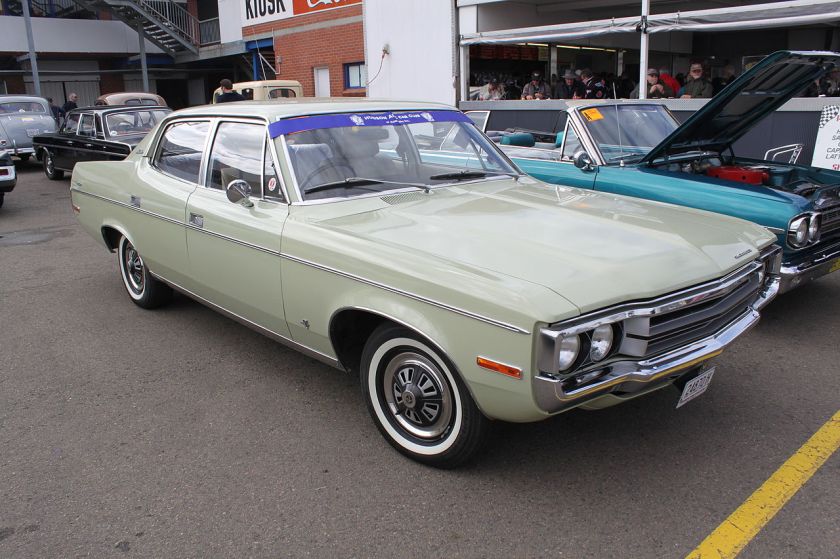

Australian assembly of the Matador by Australian Motor Industries (AMI) started in 1971, and the model was discontinued in 1978. The AMI cars were marketed as the Rambler Matador.
Knock-down kits were shipped from AMC’s Kenosha, Wisconsin factory for assembly in AMI’s facilities in Port Melbourne, Victoria. In addition to the modifications needed for Australian standards and market requirements, changes included the use of “local content” sourced parts and components (such as seats, carpeting, lights, heaters, and even unique “R”-logo wheel covers) that reduced the tariff added to each car. All AMI Matadors had right-hand drive that necessitated a unique dashboard and instrument panel. Although most of the exterior model year changes corresponded to those of U.S. production, the right-hand-drive Ramblers did not receive updated interiors as frequently.
Starting in 1971, the AMI-built Matador was available in sedan and wagon body styles. Standard equipment included automatic transmission, power steering, power windows, air conditioning, and an AM radio. The engine in the later years was AMC’s 360 cu in (5.9 L) V8. Among the options were an exterior mounted sun visor, vinyl roof cover, tow hitch, and mud flaps. The cars were targeted at the top market segment and advertised as “the American luxury limousine made for Australians” and built for Australian conditions.
Sales of the large-sized Matadors dropped after 1974. The second generation Coupe version was assembled by AMI in limited quantity in only its 1974 model year version. AMI stopped assembling Matadors in 1976. The Matador sedans and station wagons were marketed through 1977.
The AMI-built Matador may be the last to carry the “Rambler” automobile name.
Europe
U.S.-built left hand drive Matadors were exported to several European countries.
Mexico
The AMC Matador models were built by Vehículos Automotores Mexicanos (VAM) in Mexico.
First Generation
Continuing the concept of VAM’s version of the AMC Rebel, the Mexican Matador models were only available as a single trim level and in four-door sedan and two-door hardtop forms in their initial year. The hardtop retained the Rambler Classic SST name while the four-door sedan changed from Rambler Classic 770 to Rambler Classic DPL. Both body styles saw the same features as the 1971 AMC Matadors and were almost equal with only few exclusive characteristics for each. Standard equipment consisted of four-wheel manual drum bakes, manual steering, 170 bhp (127 kW; 172 PS) gross at 4600 RPM 252 cu in (4.1 L) I6 engine with Carter WCD two-barrel carburetor and 9.5:1 compression ratio, fully synchronized three-speed manual transmission with column shift, 10-inch heavy duty clutch, 3.54:1 rear differential gear ratio with manual transmission, 3.07:1 rear differential gear ratio with automatic transmission, electric two-speed wipers, electric washers, rectangular full-length 200 km/h speedometer, electric analog clock, collapsible steering column with built-in ignition switch, luxury custom steering wheel, courtesy lights, cigarette lighter, dashboard ashtray, locking glove box, wide individual front seats (hardtop), front bench seat (sedan), two-point front seatbelts, front and rear side armrests, dual rear ashtrays, single round dome light (sedan), dual C-pillar dome lights (hardtop), dual coat hooks, bright molding package, luxury wheel covers, and driver’s side remote mirror. Optional equipment included power drum brakes (standard with automatic transmission), power steering, heavy duty suspension, automatic transmission, heater with front defroster, vinyl roof, remote-controlled driver’s side mirror, passenger’s side remote mirror, bumper guards, bumper tubes, and locking gas cap.
For 1972, all VAM cars received the same revisions and improvements of the AMC models. The Classic line saw upgrades in the replacement of the 252 cu in (4.1 L) six in favor of the 282 cu in (4.6 L) with gross 200 bhp (149 kW; 203 PS) at 4,400 RPM with Carter ABD two-barrel carburetor, 9.5 compression ratio, and 266 degree camshaft. Power brakes with front disks became standard equipment regardless of transmission, a Chrysler A998 three-speed automatic transmission in place of the older Borg-Warner automatics, heavy duty suspension with front sway bar, improved heater with revised controls placed to the right of the steering column, and new two-round-pod instrument cluster. New wheel cover and grille designs were noticeable on the exterior, while seat patterns and side panels were also updated.
Since its redesign in 1970, the hardtop body style started to drop in sales and the front end facelift of 1971 did not help to reverse the trend. VAM did not want to drop it leaving it without a mid-sized two-door. The model was reworked into an all-new limited edition with a sportier focus, as well as featuring more appointments similar to a personal luxury car. This became the VAM Classic Brougham, with the name “Rambler” removed to rejuvenate the line, while the four-door sedan became the VAM Classic DPL. The Brougham included as standard equipment power steering, three-speed automatic transmission with floor-mounted shifter (the same unit as the U.S. Rebel Machine models), center console with locking compartment, individual high-back bucket seats (shared with the VAM Javelin), bright trim for pedals, heater, AM/FM stereo radio with four speakers, tinted windshield, and a remote controlled driver’s side remote mirror. Despite the marketing and high level of equipment, the public saw it as the previous model. The only external differences with the previous model were limited to the colors, the grille, the standard vinyl roof and the wheel covers. The price was higher than that of the Rambler Classic SST and it did not increase sales for the year, ending below VAM’s expectations.
Because of the low sales of the Classic Brougham hardtop, the Classic DPL four door sedan became the only Matador version produced by VAM for 1973, with Javelin being the largest two-door model offered by the company. The 1973 Classic DPLs were virtually the same to their previous year’s counterparts with differences only in seat and side panel designs as well as the grille design and a new engine head with larger valves and independent rockers.
Second Generation
The generational change that AMC Matadors received for 1974 in the United States was also introduced in Mexico. The Classic DPL obtained the longer “coffin nose” front clip design complete with the change from dual headlights to single units, grille-mounted parking lights as well as five-mile-per-hour bumpers with standard bumper guards. The rear licence plate was relocated to the center of the rear panel and obtained new longer rectangular taillights. The interior saw the all-new padded dashboard with three squared pods for instruments (emergency lights, gasoline level and water temperature to the left, 200 km/h speedometer at the center and the electric clock on the right) and a horizontal radio design. Seats and interior door panels were once again redesigned. Units ordered with the automatic transmission also included power steering and a heater. The beginning of automotive engine emission certification in Mexico affected the 282 cu in (4.6 L) six, which changed to a lower 8.5:1 compression ratio. The rear differential gear ratio was changed to 3.31:1 for both transmissions.
The biggest news of the year was the arrival or a new two-door model, AMC’s Matador coupe. Unlike all previous (Matador and Rebel) models, it was available in two different trim levels; the sporty Classic AMX equivalent to the AMC Matador X model and the luxury Classic Brougham equivalent to the AMC Matador Brougham coupe model. Both versions were mechanically the same, carrying the same technical specifications as the Classic DPL models. Their main differences relied in appearance and accessories. The Classic AMX sported VAM’s inhouse five-spoke wheels with volcano centercaps and trim rings, a blackedout grille and a rally stripe surrounding the full length of the car with an integrated AMX emblem on the right corner of the trunk lid; the Classic Brougham had a standard vinil roof cover with its respective moldings, wheelcovers (new design for the year), standard grille and “Brougham” emblems over the C-pillar bases. The Classic AMX showcased a three-arm spoked sports steering wheel, high-back fold-down individual bucket seats, center console with locking compartment, floor-mounted gearshift, and AM/FM radio. Despite the sportiness of the model, intended to take the place of the Javelin as VAM’s top-of-the-line performance model as well as the image and enthusiast builder, the side armrests were the standard designs used in the Matador base models of the U.S. On the other hand, the Classic Brougham sported a custom sports steering wheel and column-mounted shifter with a fold-down split-back bench seat and AM radio. Unlike the Classic DPL, both the Classic AMX and the Classic Brougham included the automatic transmission, power steering and heater as standard equipment. A unique characteristic of the 1974 VAM Classic AMX was the shifter because it was the Javelin’s “aircraft” U-shaped design.
For 1975, changes on all three versions were few. The Classic DPL obtained a new grille design with rectangular parking lights alongside new seats and door panels. The luxury steering wheel obtained a new design for the both Classic DPL and the Classic Brougham. Both coupe models obtained new interior door panels with AMC’s full length X-model side armrests; the panels of the sports version also carried an etched “AMX” emblem over the vinyl near the top front corner of the door. The Classic AMX also featured AMC’s X-model floor-mounted shifter design. All three versions shared the upgrades of electronic ignition, a vacuum gauge in place of the electric clock, a 282 cu in (4.6 L) I6 with a lower 7.7:1 compression ratio, and Holley 2300 two-barrel carburetor. There were more changes for the 1976 model year. The Classic DPL and Brougham featured a new design for wheel covers. Both coupe models obtained a new grille design divided in two portions with squared parking lights. The Classic AMX had a new and more discreet side decal covering only the front fenders and a new metal “AMX” emblem on the trunk lid corner. All three versions shared a new 160 km/h speedometer, tinted windshield, and seat designs that were based in AMC’s Oleg Cassini units for the Matador coupes. These were color-keyed with the rest of the interior, the most unique ones were those of the AMX as they were individual and included adjustable headrests with integrated Cassini crests and reclining mechanism. This is the only case of a VAM car close to the various U.S. AMC designer cars.
The Classic line was discontinued in the middle of the 1976 model year. VAM was looking forward to introducing the Pacer model to Mexican market, which would represent its fourth product line, while Mexican legislation at the time allowed only three per marque. Having both the Classic and the Pacer in the luxury market segment would have also caused internal competition. VAM favored the new Pacer over what until that time had been its flagship model. Starting in 1977, VAM’s most luxurious model was the Pacer, and its largest sized models were the Americans (AMC Hornets).
New Zealand
New Zealand had right hand drive Rambler Matadors assembled under license from AMC by Campbell Motor Industries (CMI) in Thames. The CMI Ramblers used Canadian-sourced complete knock down (CKD) kits. They featured modifications for the New Zealand market including the continued use of the Rambler marque. Matadors were assembled by CMI until 1975, along with other brands. CMI later became part of Toyota New Zealand.
United Kingdom
The Rambler name was used on right hand drive Matador models sold in the UK. The cars were supplied by AMI in Australia up to 1976, but the final 1977 models in the UK were regular LHD versions imported from the U.S.
End of the line
During the late 1970s, the domestic automobile market was moving to smaller cars. The large-sized Matador was no longer attractive to customers demanding more economical cars as fuel and money became increasingly worrisome problems after the 1973 oil crisis and the continuing double digit domestic inflation.
Lacking the financial resources for a full redesign (partly because of the expensive tooling costs of the coupe), AMC dropped the large Ambassador after 1974, while the Matador was discontinued after 1978, around the same time as Ford moved their full-size nameplates to a smaller platform. The downsized 1977 Chevrolet Impala also spelled doom for large intermediates from AMC and Chrysler. American Motors responded to the declining demand for large cars by introducing a new nameplate in 1978, the AMC Concord. The Concord was an upmarket restyling and positioning of the compact AMC Hornet which had the same 108-inch (2,743 mm) wheelbase as the redesigned intermediate 1978 Chevrolet Malibu. It was presented as combing an “easy-to-handle size with a roomy sumptuous interior” and in contrast to the Matador coupe, the “overall styling was pleasant … would not offend anyone” This was the first full-line of economical, compact-sized cars with luxurious trim, features, and comfort levels previously available only in larger automobiles.
American Motors did not have another large car until the Eagle Premier that was developed with Renault‘s partnership and introduced to the marketplace following the purchase of AMC by Chrysler in 1987.
Collectability

While well-restored examples of Matador sedans can still be purchased for under $3,000, ads have been published asking over $10,000 for restored coupes.
Hemmings Classic Car magazine listed the 1974–78 Matador Coupe as one of their 19 pieces of rolling proof that the old-car hobby need not be expensive and described the Coupe as “possibly one of the most distinctive shapes to come out of the 1970s, and arguably a style pinnacle for the personal luxury movement”, the James Bond movie role, as well as its NASCAR history.
An article in 1991 entitled “Cool Cars Nobody Wants” describes the 1974–75 AMC Matadors as a collectable, stating: “long considered the automaker to geeks, American Motors began its slow decline, we believe, when the liberal do-gooders who made up its core market began earning enough money to buy Scandinavian cars.”
In 2014, Hagerty collector insurance listed the Adam 12 AMC Matador as their number one “favorite full-size, rear-wheel-drive American cop cars from 60 years of the best cop shows.”
Australian Motor Industries
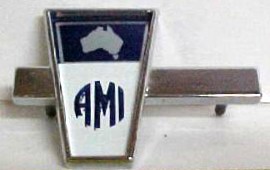
Emblem featured on the sides of cars assembled by AMI during the 1960s and 1970s
|
|
| Industry | Automotive |
|---|---|
| Fate | Bought out by Toyota |
| Successor | Toyota Motor Corporation (Australia) |
| Founded | 1926 |
| Defunct | 1987 |
| Headquarters | Port Melbourne, Australia |
Australian Motor Industries (AMI) was an automobile assembly firm that was significant in the early history of the automotive industry in Australia.
Start of production

The origins of Australian Motor Industries can be traced back to 1926 when J.F. Crosby decided to invest in Eclipse Motors Pty Ltd of Melbourne. In 1929 the company secured the Victorian agency for Standard Motor Company‘s cars, then changed the company name to Talbot and Standard Motors, and began a steady period of expansion with the Standard marque through the 1930s. In 1952 the Crosby family formed a holding company, Standard Motor Products Ltd, in co-operation with the Standard Motor Company of England to assemble cars at their new assembly plant in Port Melbourne. The subsidiary company responsible for vehicle assembly was the Standard Motor Company (Australia) Limited.
Import tariffs on vehicles encouraged the growth of the Australian vehicle body building industry from the early 1920s. The tax concessions varied with the degree of local content.
Changes within the industry saw the consolidation of the principal manufacturers and the demise of the smaller body builders. The Port Melbourne assembly plant was one of many new facilities which were set up to meet the post war demand for new vehicles. By 1955 the assembly complex had expanded to 33 acres (0.13 km2; 0.052 sq mi) of land and the new engine assembly plant had a capacity of 100 engines per eight-hour shift.
Standard Motor Products Ltd was unusual in the Australian motor industry because of the high Australian shareholding of the company; 88% in 1952 when the Australian company bought out its English partner. The remaining shares were held by the Standard Motor Company UK. As a sign of the close co-operation between the two companies, Sir John Black was made president of SMP and Arthur F. Crosby remained as chairman. His brother, Clive C. Crosby, became the managing director.
In 1958 the company negotiated an agreement with Daimler-Benz to assemble and distribute Mercedes Benz vehicles in Australia. In recognition of this new agreement the company was renamed Australian Motor Industries and a new subsidiary company was formed to handle the Mercedes Benz franchise.
Through its long association with the Standard Motor Company, AMI also held the franchise for Triumph cars and assembled Ferguson tractors through another subsidiary company of the group, British Farm Equipment. An extensive dealer network throughout NSW and Victoria saw Standard cars and Ferguson tractors sold side by side in country areas. The most popular car sold was the Vanguard model.
Reorganization

In October 1960, AMI signed an agreement with American Motors Corporation (AMC) to assemble the Rambler range of cars from complete knock down (CKD) kits. Another deal with Fiat was planned to replace the Ferguson tractors distributed by BFE. The Standard Motor Company had sold their tractor facility in Coventry to Massey Ferguson and focused on automobile production.
AMI ran into financial trouble during the Australian credit squeeze of 1961 and the company was forced to sell off many assets and vehicle stock to remain solvent. Part of the restructure resulted in the sale of their share in the Mercedes Benz franchise to the German parent company.
In 1963 the company secured the Australian franchise for Toyota cars and began assembly of the Tiara range. From this point the financial position of the company steadily improved and by 1967 AMI was assembling 32 different models for the Australian market, as well as importing fully assembled Toyota Corollas for their dealer network.
Other cars assembled by AMI included the Rambler range from American Motors and Triumph cars from Leyland Motors. Leyland had inherited shares in AMI when it had merged with Standard-Triumph International in 1961. During the early 1960s the foreign share of the automobile motor vehicle market was estimated to be 95%, and as the only sizeable producer with a local equity, AMI continued to manufacture overseas designs.
AMI assembled the Triumph Herald from 1959 to 1966 and produced some unique Australian models. The Triumph 2000/2500 range was assembled in Port Melbourne from 1964 to the mid-1970s.
By 1965, the demise of the Standard Vanguard and the loss of assembly rights for Mercedes-Benz vehicles left AMI with additional capacity to assemble Rambler, Triumph, and Toyota models.
Operations with AMC
Starting in 1960, AMI assembled a broad range of AMC cars, all with right-hand drive and carried the Rambler brand name. This meant that Australians could purchase a Rambler Javelin, AMX, Hornet, or Matador long after the Rambler marque was dropped from use on the equivalent U.S.-market models.
Complete knock down kits were shipped from AMC’s Kenosha, Wisconsin facility (all knock-down kits to all assembly operations were from Kenosha), but the Australian cars were assembled with a percentage of “local content” to gain tariff concessions. This was done using parts and components (such as seats, carpet, lights, and heaters) from local Australian suppliers. AMI specified what parts were not to be included in the unassembled kits sent by AMC. Other necessary parts specified by the assembler were boxed and shipped for assembly at the final destination in Australia. It is unknown exactly how many parts were included to be installed by the assembly operation, that varied with each operation. Outside colors were chosen by AMI and were the same as used on AMI assembled Triumph and Toyota cars of that period. The distinctive AMI exterior emblems were used on Ramblers, as well as Triumph and Toyota cars assembled by AMI from 1968 onward.

A total of 24 AMC AMXs, all 1969 models were made by AMI between August, 1969 and July, 1970. All featured the 343 cu in (5.6 L) V8s. Differences to the RHD two-seater AMXs compared to the U.S. models included swapping the power brake booster and heater motor on the firewall, the power steering pump remained in its usual left location, although the rest of the steering components had to be on the right side of the cars. All of the Australian AMX interiors were finished in black featuring a unique RHD dashboard with a wood-grained instrument cluster in front of the driver. While the AMX was marketed as a performance muscle car in the U.S. marketplace, the Australian AMXs came with a large high level of equipment that was optional in the U.S., and these AMXs were advertised as personal luxury cars.

One AMC Gremlin was also assembled AMI in Port Melbourne for evaluation purposes and branded as a “Rambler Gremlin”. The car features the standard 232 cu in (3.8 L) I6 engine with three-speed manual transmission, as well as right-hand drive and the mandated percentage of locally produced content.
From 1971, Australian assembled AMC Matadors were equipped with standard column shift automatic transmissions, power steering, power windows, air conditioning, and an AM radio. The engine in the later years was AMC’s 360 cu in (5.9 L) V8. Options included exterior sunvisor, vinyl roof cover, tow hitch, and mud flaps. Registrations for AMC vehicles dropped after 1974. A total of 118 Hornets and 145 Matadors (118 sedans, 27 wagons) were sold during 1974. Registrations for 1975 were 136 Hornets and 118 Matadors (85 sedans 33 wagons). In 1976 there were 88 Matadors (78 sedans, 10 wagons), while 1977 saw just 24 Matador sedans and 3 wagons. Additionally, Matador coupe CKD kits arrived in late-1974, and the assembly of 80 cars began in 1976. One fully assembled AMC Pacer was imported for evaluation purposes.
American Motors cars were assembled in Port Melbourne by AMI up to 1978. The company retained a niche market as the sole U.S. sourced cars available in the Australian marketplace. For example, the Government of New South Wales selected the Rambler Rebel and the Matador as official vehicles in the 1970s.
Toyota and buyout

The first Toyota car ever built outside Japan was assembled by AMI in April 1963, the Toyota Tiara. The AMI production of Toyotas expanded in the 1960s to also include the Crown, Corona, and Corolla assembled at AMI’s Port Melbourne factory. Toyota Motor Corporation of Japan purchased 10% of outstanding AMI shares. As a fast-growing company, took a controlling interest in AMI in 1968 as a contract with the British Leyland ended. Toyota also purchased a 40% share in Thiess Holdings, an importer of light commercial vehicles, which it renamed Thiess Toyota.
Recognizing the majority owner of the company and the products that it manufactured and marketed, AMI renamed itself as AMI Toyota Ltd in 1985. The company continued to be listed on the Australian Stock Exchange with a minority Australian shareholding until 1987, when Toyota moved to acquire the shares held by the remaining shareholders.
The Japanese company then amalgamated the company with its other Australian operations in 1989 to form two arms. Toyota Motor Corporation Australia which was responsible for passenger vehicles and Toyota Motor Sales Australia which was responsible for both Toyota commercial vehicles and Hino trucks.
Toyota vehicle production was transferred from the historic Port Melbourne factory to the company’s new $420 million facility at Altona, Victoria in 1994. The Australian facility now exports CKD kits to assembly plants in Thailand, Malaysia, Indonesia, Vietnam, and the Philippines.
Industrias Kaiser Argentina
 |
|
| Industry | Automobile |
|---|---|
| Fate | Bought out by Renault |
| Founded | 1956 |
| Defunct | 1970 |
| Headquarters | Córdoba Province,Argentina |
| Products | Vehicles |
|
Number of employees
|
8,500 (1965) |
| Parent | Kaiser Motors |
Industrias Kaiser Argentina S.A. or IKA was an Argentine motor car company established in 1956 in Córdoba Province as a joint venture with Kaiser Motors of the United States.
The automaker produced a variety of Kaiser Jeep vehicles and American Motors (AMC) models, including Argentina’s most iconic car, the Torino, before partnering with France’s Renault, which bought it out in 1970.
History
1950s
The government of Argentina sent a delegation to the United States in 1951 to meet with auto manufacturers interested in building cars in Argentina. Unfortunately the market was seen as too small to justify the investment, and no one but Kaiser was interested. On 19 January 1955, the government signed an agreement to permit Kaiser to manufacture automobiles and trucks in Argentina. The U.S. automaker was facing problems in its domestic market. It took the Willys Aero out of production in 1955 leaving two redundant sets of vehicle production lines. The Kaiser auto manufacturing equipment was shipped to Argentina while the Willys equipment formed the automaker’s capital contribution to establish a new company in Brazil.
Kaiser created Kaiser Automotores, a wholly owned subsidiary as holding company that owned part of the newly created Industrias Kaiser Argentina, the manufacturing and marketing arm. Other partners in IKA included Industrias Aeronáuticas y Mecánicas del Estado (IAME), the government-owned airplane and vehicle manufacturer, as well as private investors. The public offering of shares of stock was oversubscribed.
The first imports from the U.S. consisted of 1,021 complete cars, manufacturing equipment, and spare parts. Groundbreaking for the new factory in the city of Santa Isabel in Córdoba Province was held in March 1955 with the first Jeep vehicle driven out on 27 April 1956.
The initial production was of various Jeeps. Models included the CJ versions, as well as the Willys Jeep Truck or IKA Baqueano Pick-up, and the Willys Jeep Wagon or IKA Estanciera as well as a panel delivery version known as the IKA Utilitario. These utility vehicles were shortly followed by a local version of the Kaiser Manhattan 4-door sedan, called the Carabela, using the U.S. production equipment which had been transferred to IKA. The combined Carabela-Jeep production of 22,612 units was 81% of all vehicles manufactured in Argentina in 1958 with the only competition being a state-run utility vehicle manufacturer.
To expand the marketing of its vehicles in 1958, IKA sponsored a musical variety show El Show de IKA that highlighted an American vocalist, Andy Russell. It was the most expensive TV program produced in Argentina, a Jeep was driven on the stage during every show, and the first to use cameras mounted high above the stage.
In 1959, the American-Argentine company become IKA Renault as a result of an agreement to produce the French firm’s Renault cars. The small Renault Dauphine was produced and badged IKA Dauphine.
1960s
The Carabela model was discontinued in 1962, and by that time IKA also assembled other automobiles. Alfa Romeo sold IKA the body molds for its discontinued Alfa Romeo 1900 sedan to become the IKA Bergantin.
Production started on 10 March 1960. The Bergantin was described as the first locally conceived, designed, and engineered car. Local content made in Córdoba included a Willys 2480 cc four-cylinder engine and the Jeep rear suspension and drum brakes that were also used in the Estanciera. The car rode on a 103.3 in (2,624 mm) wheelbase with an overall length of 173 in (4,394 mm). Starting on 31 May 1961, the IKA Bergantin received the 115 hp (86 kW) Continental six-cylinder that was already used for the Estanciera and Carabela models, but only 353 units were made with this engine. Production of the IKA Bergantin ended on 21 February 1962, with nearly 5,000 units sold in three versions: Standard, Deluxe, and Taxi cab. At the time, IKA’s Cordoba plant produced about 40,000 vehicles annually, including Renaults and Jeeps as well as Kaisers and Ramblers.
In 1962, another joint model venture agreement took place between IKA and American Motors Corporation (AMC). Various Rambler models licensed from American Motors Corporation (AMC) replaced all of the old Kaiser and Alfa Romeo based cars. In order to meet local content regulations, however, the Ramblers were adapted to use an Argentine-built Kaiser engine – which luckily was an easy fit, perhaps since the same engineer (Ralph H. Isebrandt) had designed both drivetrains. The final form of the AMC variants was the potent Rambler American/Classic-based Torino that saw a success on international racing circuits. Production peaked in 1965, with a total of 55,269 vehicles were assembled by IKA of which about one-third were Kaiser-Frazer based cars and Jeeps, while other two-thirds were Nash Ramblers and (from 1960) Renaults produced under license. Representing about 28% of Argentina’s total production, IKA was the nation’s largest independent automobile manufacturer with 8,500 employees.
By 1966 the Santa Isabel plant was producing a broad line of models that included the following:
- Four Renaults: Dauphine, Gordini, R4L, and R4F
- Six utility models: Jeep, Pick-up, Jeep Estanciera (also taxi version), Jeep truck, Jeep Gladiator (500, 1000 kilos) – in two and four wheel drive – and Charge
- Four AMC Rambler models: Classic Custom, Classic de Luxe, Classic Cross-Country (station wagon), and Ambassador 990
- The IKA Torino model (coupe and sedan)
In 1967, Régie Nationale des Usines Renault of France assumed control of the company by purchasing a large percentage of the shares of stock and changed its name to IKA Renault S.A.
1970s
In 1970 Kaiser Industries decided to exit the auto business and it sold the rest of its IKA holdings to its partner, Renault of France, thus ending the history of Argentina’s indigenous automaker. The new enterprise focused on mass consumption models such as the Renault 12.
In 1975, the original factory in Santa Isabel changed from IKA to Renault Argentina S.A.
Cars built in the Santa Isabel factory
- IKA Jeep (1956 – 1978)
- IKA Estanciera (1957 – 1970)
- IKA Baqueano (195? – 19??)
- Kaiser Carabela / IKA Carabela (1958 – 1961)
- IKA Bergantin (1960 – 1962)
- Renault Dauphine & Ondine (1960 – 1970)
- Renault Frégate (1960)
- IKA Rambler (1962 – 1967)
- IKA Jeep Gladiator (1963 – 1967)
- IKA Ambassador (1965 – 1972)
- Renault 4 (1963 – 1987)
- IKA Torino (1966 – 1982)
- Renault 6 (1969 – 1984)
- Renault 12 (1970 – 1994)
- Renault 18 (1981 – 1998)
- Renault Fuego (1982 – 1995)
- Renault 11 (1984 – 1996)
- Renault Trafic (1986 – 1999)
- Renault 9 (1987 -1996)
- Renault 21 (1989 – 1996)
- Renault 19 (1992 – 2000)
- Renault Clio (1996–present)
- Renault Mégane (1997 – 2008)
- Renault Kangoo (1999–present)
- Renault Symbol (2008–present)
- Renault Fluence (2010–present)
Vehículos Automotores Mexicanos
| Semi-state controlled | |
| Industry | Automotive |
| Fate | Defunct |
| Predecessor | Willys Mexicana |
| Successor | Renault de México |
| Founded | 1946 |
| Defunct | 1989 |
| Headquarters | Mexico City,, Mexico |
|
Area served
|
Mexico |
|
Key people
|
Raúl Netzahualcóyotl Valdez |
| Products | passenger cars, luxury sedans, performance cars, SUVs |
| Parent | Sociedad Mexicana de Crédito Industrial |
Vehículos Automotores Mexicanos S.A. (VAM) was a Mexican automaker from 1946 to 1989.
The original organization, a distributor and license manufacturer for Willys-Overland and AMC vehicles, became government controlled in 1963 with American Motors Corporation (AMC) holding a minority interest. The company imported and produced automobiles and light trucks under license from Willys, AMC, Eagle, Jeep, Chrysler, Renault and designed their own vehicles based on AMC platforms. The early-1980s collapse of the Mexican economy forced a sale of the Mexican government’s interest in VAM to Renault, which shut down the firm in the late 1980s. The Mexican government maintains the rights to the VAM name and brand to this day.
History
Vehículos Automotores Mexicanos was established as its own company 1963 after the Mexican Government passed a law to control the privately owned Sociedad Mexicana de Credito Industrial (SOMEX), the parent company of Willys Mexicana S.A. (established since 1946 as a local manufacturer and distributor for Willys-Overland Jeeps and used both the names VAM and Willys Mexicana on its products) that held the license to produce and import AMC Ramblers. Willys Mexicana was transformed into VAM in 1963 after an agreement between American Motors Corporation (AMC) and the Mexican Government. After the restructuring of the original company, VAM proceeded to the construction of its own engine plant located in the municipality of Lerma, Estado de México. At the same time, AMC took a 40% equity interest in VAM, but did not actively participate in the company’s management. Government content regulations required VAM vehicles had to have at least 60% locally sourced parts.
AMC’s stake in VAM passed into the hands of Renault in late 1980 when Renault assumed the majority (controlling) ownership of AMC. The last AMC based cars were produced in 1983, the same year the last two wheel drive cars were produced by AMC in the US. Beginning in 1984 the company produced several Renault models as VAM vehicles.
Financial problems during a collapse of the Mexican economy (recession and devaluation of the Mexican peso, beginning in 1982) forced the eventual sale of the Mexican government’s interest in the company to Renault. The Mexican government actually paid Renault some US$ 200 million to take over VAM and assume its debts in 1987. Renault then closed VAM down.
Products
From its initial inception as Willys Mexicana in the late 1940s the company manufactured Jeeps under license and AMC vehicles after 1954. Most VAM cars mimicked domestic (U.S.) models but had significant differences in aesthetic design. In the sixties, VAM produced the Rambler American (in 2- and 4-door and wagon versions plus a limited single-year hardtop imodel in two generations), a version of the AMC Rebel called the “Rambler Classic” (in 2-door hardtop and 4-door sedan versions) and the AMC Javelin. In the seventies VAM produced a full line of AMC Hornets, called first “Rambler American” and since 1975 just “American,” plus a sport version called “Rambler American Rally” (subsequently “American Rally”). The Concord hatchback was badged a “American Rally AMX.” Rambler Classics, AMC Gremlins, Javelins, and Pacers were sold under their original U.S. names. The AMC Matador sedan models were badged as the “Classic DPL” since 1972 and the Matador Coupe was produced in a sport version called “Classic AMX” and a luxury “Classic Brougham”.
In later years, VAM badged variants of the AMC Spirit as the sporty “Rally AMX”, luxury “Rally SST” and high performance “Rally GT”. The Mexican version of the AMC Concord kept the “American” name, in base and GFS, ECD and DL models. Some VAM models mixed and matched body components from U.S. cars. Examples of Mexican-only cars include a 1977 two-door “Hornet” with a 1977-1978 Gremlin front clip. Many of these carried slightly different engines, all-original interiors, and different model and designation names than their counterparts in the United States and Canada, but were all based on U.S. bodies and used the same parts. Most bodies used the same year parts as U.S. production cars, but sometimes years and models were mixed. VAM built 1974-1976 Gremlins, for example, used the AMC Hornet grille and front fenders, and the 1977 Hornet mentioned above.
VAM produced one original body not available in the U.S. or other markets, the VAM Lerma (named after the town the engine factory was in). The Lerma was a “cut and weld” built body. The rear hatchback portion of an AMC Spirit (or rather VAM Rally) was cut from the Spirit body grafted onto the longer wheelbase AMC Concord (VAM American) in two and four door versions. This idea was presented to AMC, but the labor cost to produce the car using the “cut and weld” method would have been cost prohibitive in the U.S., and sales of the aging Concord/Spirit (in production since 1970) were not up to adding a new body that would require unique panels to be pressed.
All VAM engines were of AMC design, but built in Mexico. Moreover, VAM added unique engineering features to deal with low octane fuel and high altitudes. This included a 282 cu in (4.6 L) I6 engine (essentially a 258 block cast with a 0.16″ larger bore) not available from AMC. The larger six helped counter high altitude/low octane fuel power loss and with the lack of a V8 engine option in VAM produced vehicles.
In 1982, VAM’s engineering department worked on a prototype Jeep Cherokee (XJ) and fitted VAM’s straight six into it (in place of AMC’s four-cylinder or optional V6 from General Motors). AMC was impressed by the project, which eventually developed into the 4.0-liter engine version introduced in the 1987 Jeep Cherokee (XJ).
That was all about Rambler and it’s followers.
What follows now are only pictures:
foto’s without date hereunder:
That’s all.










































